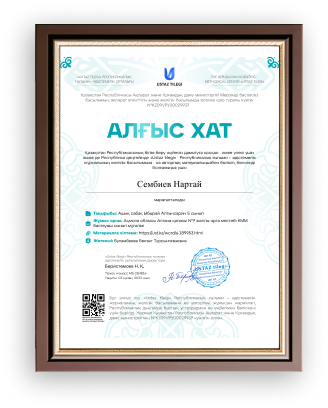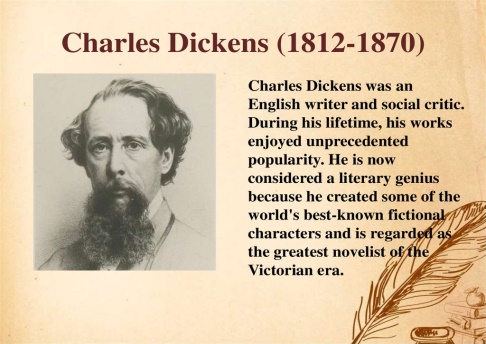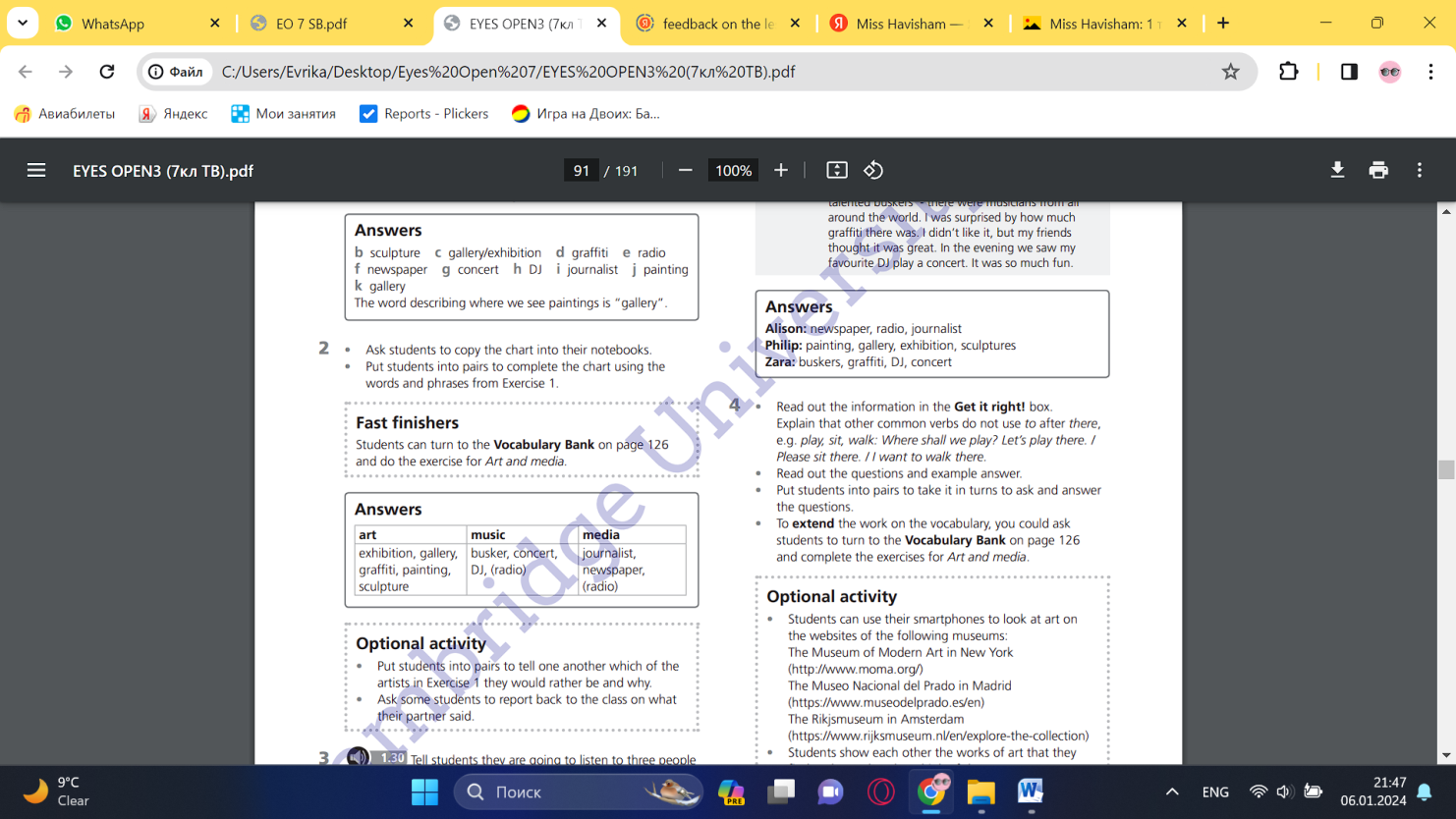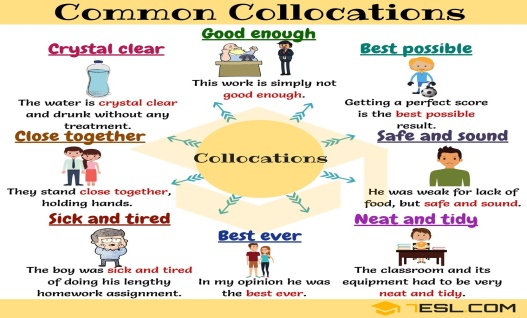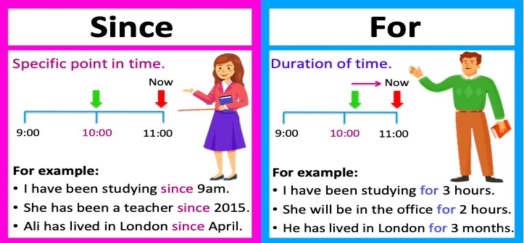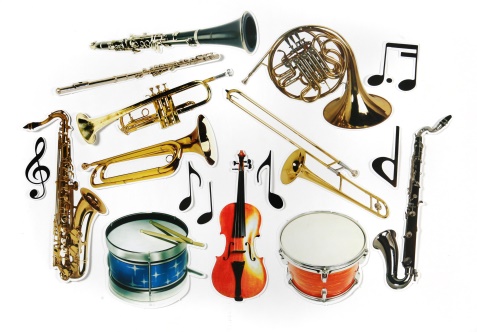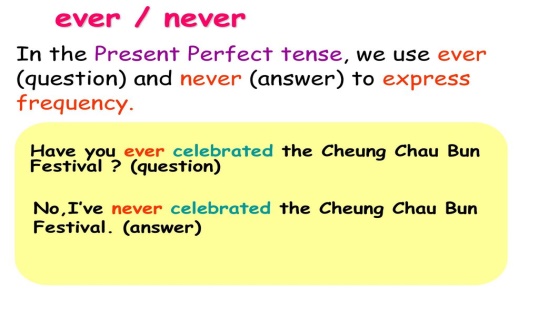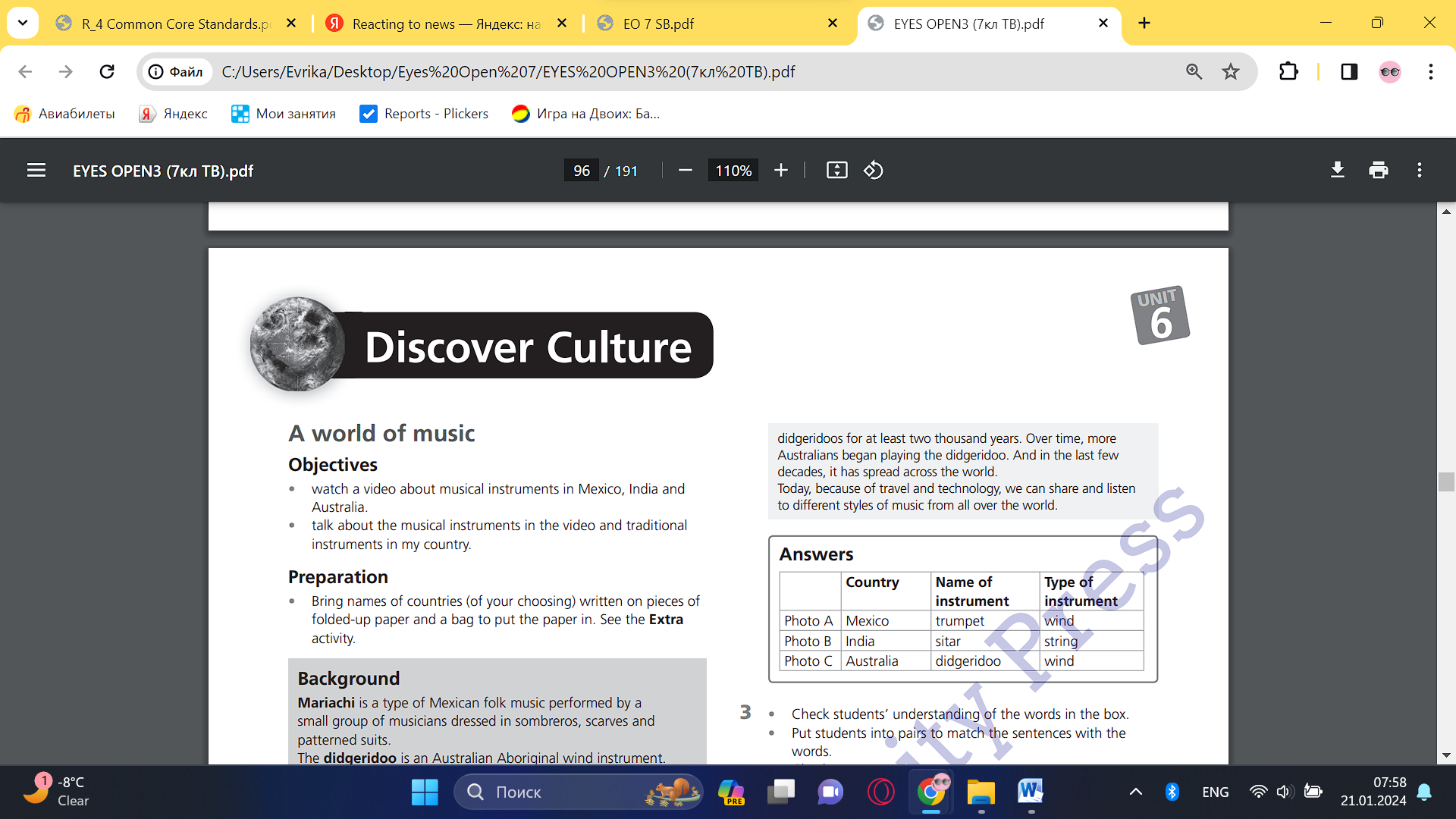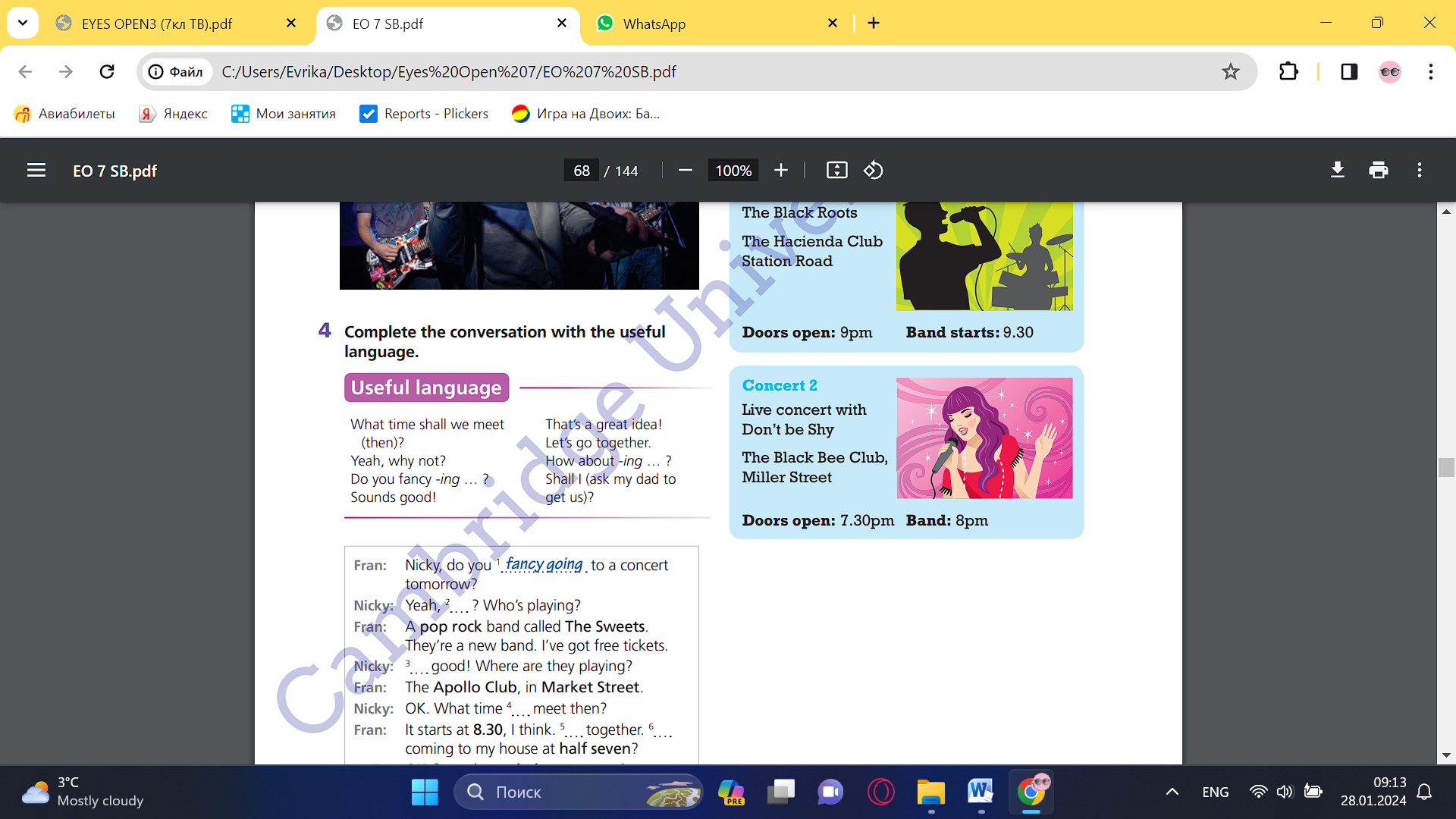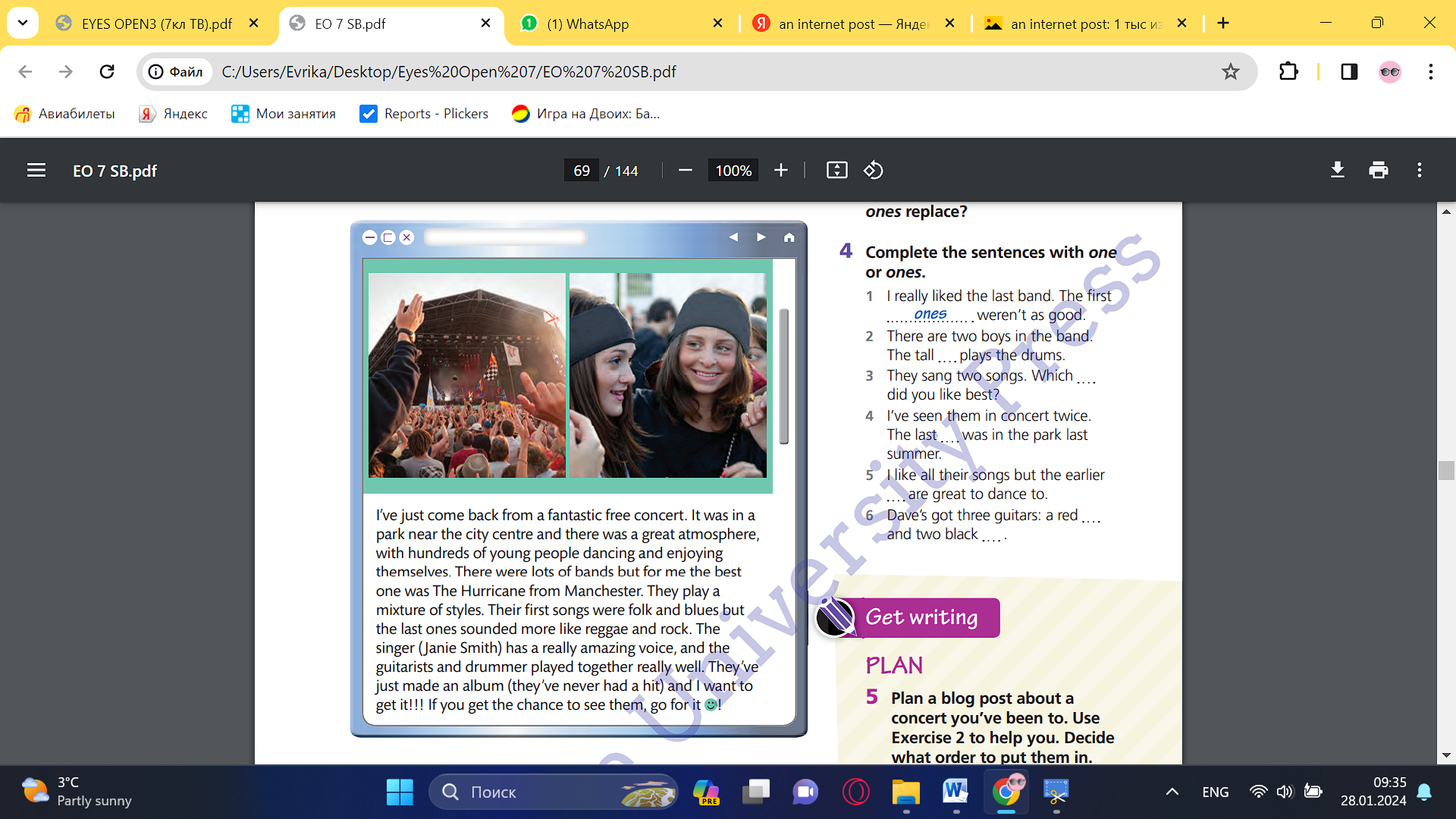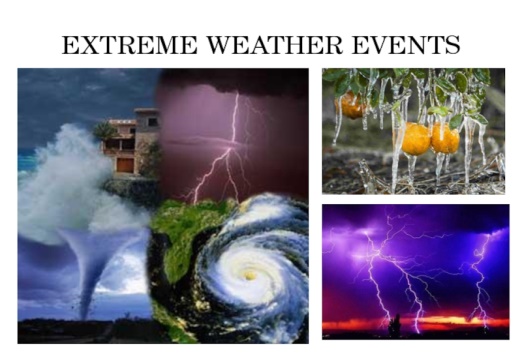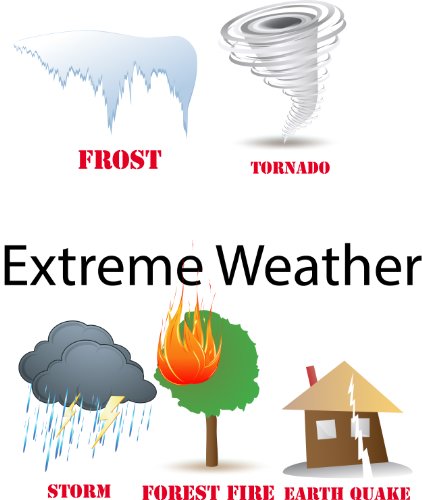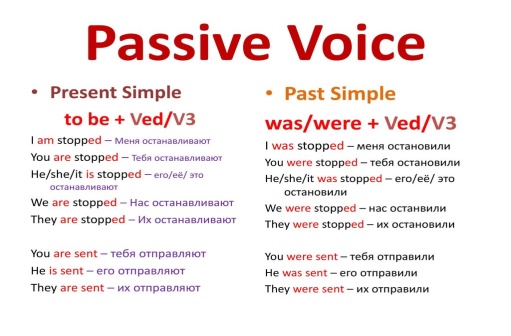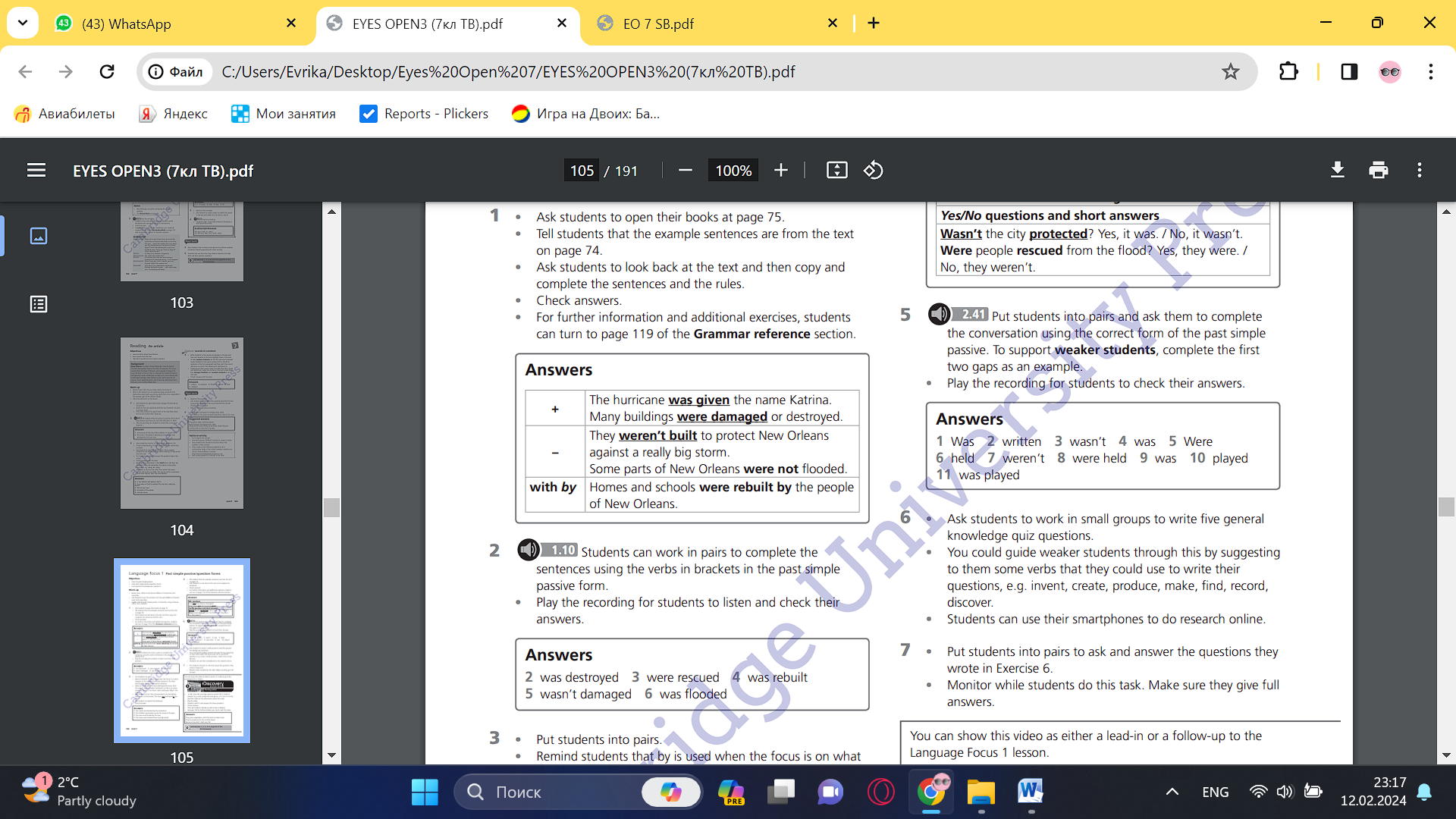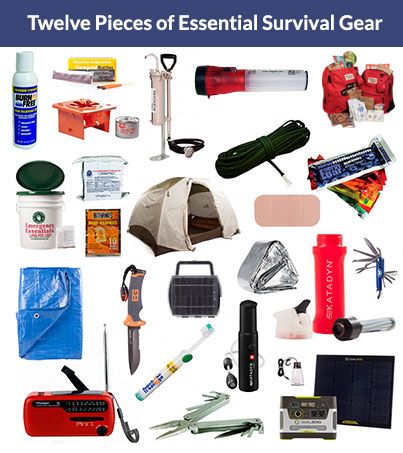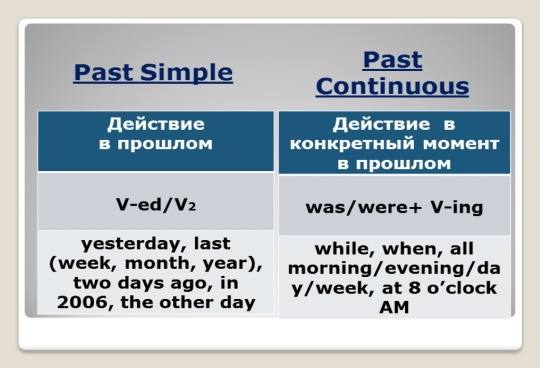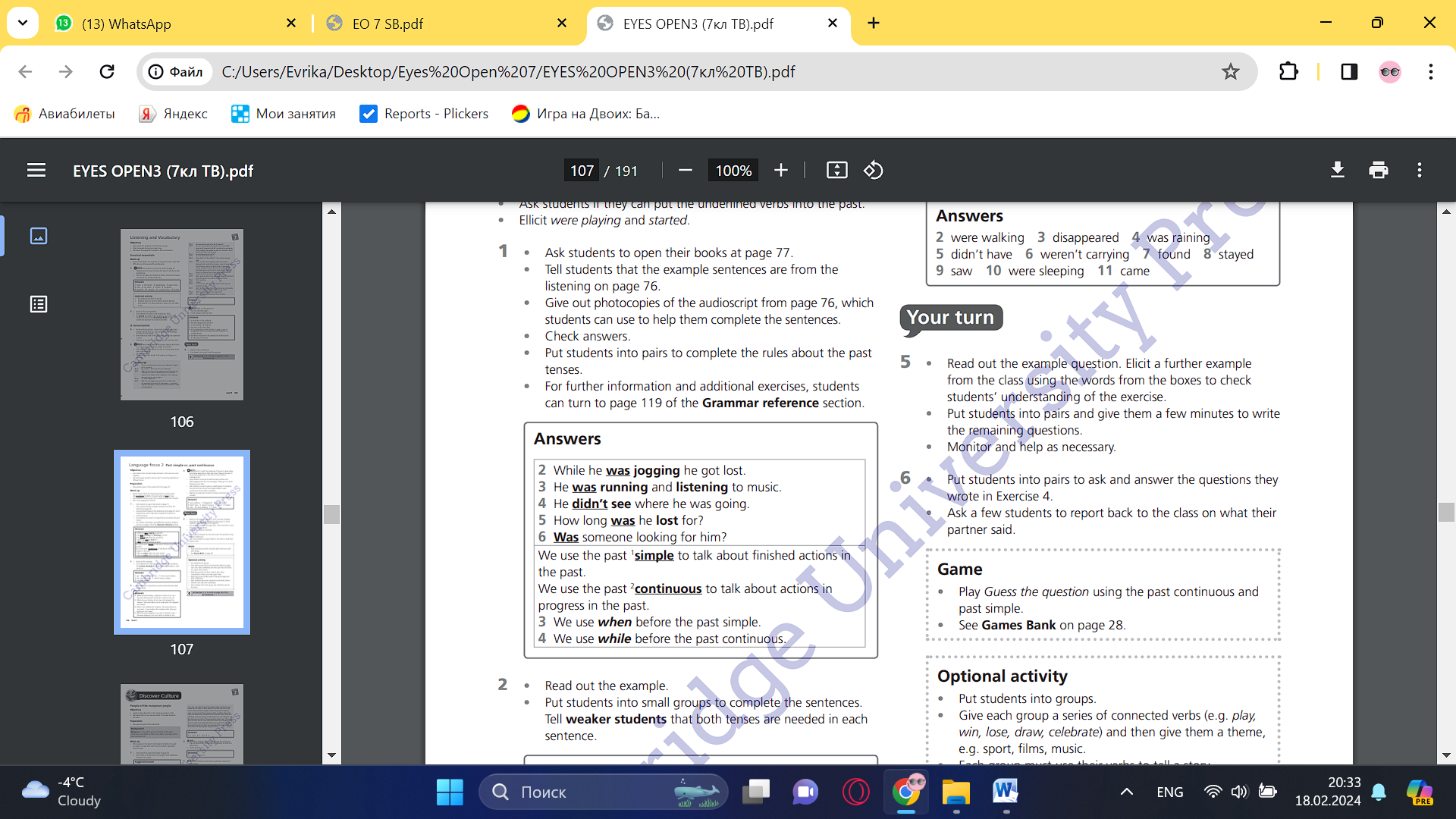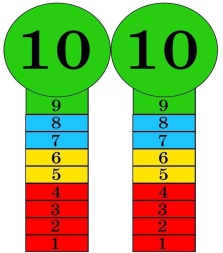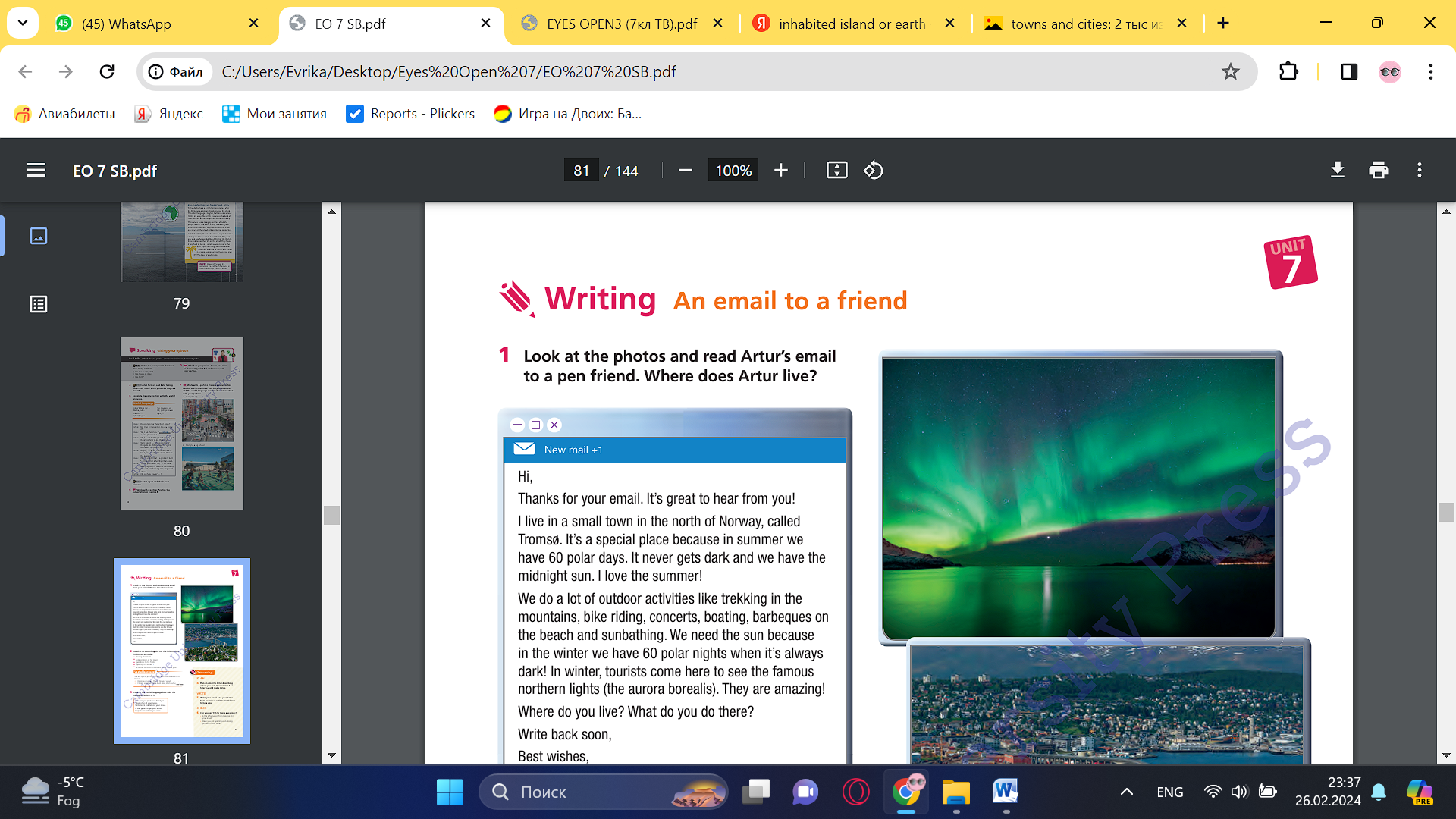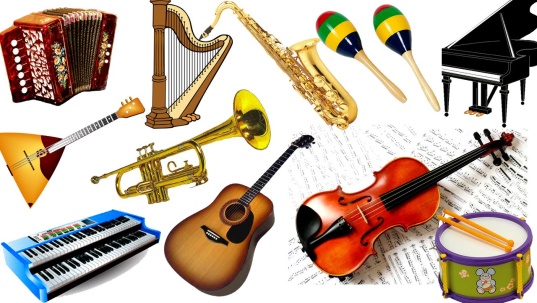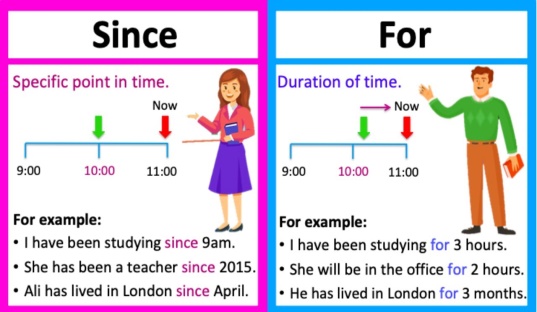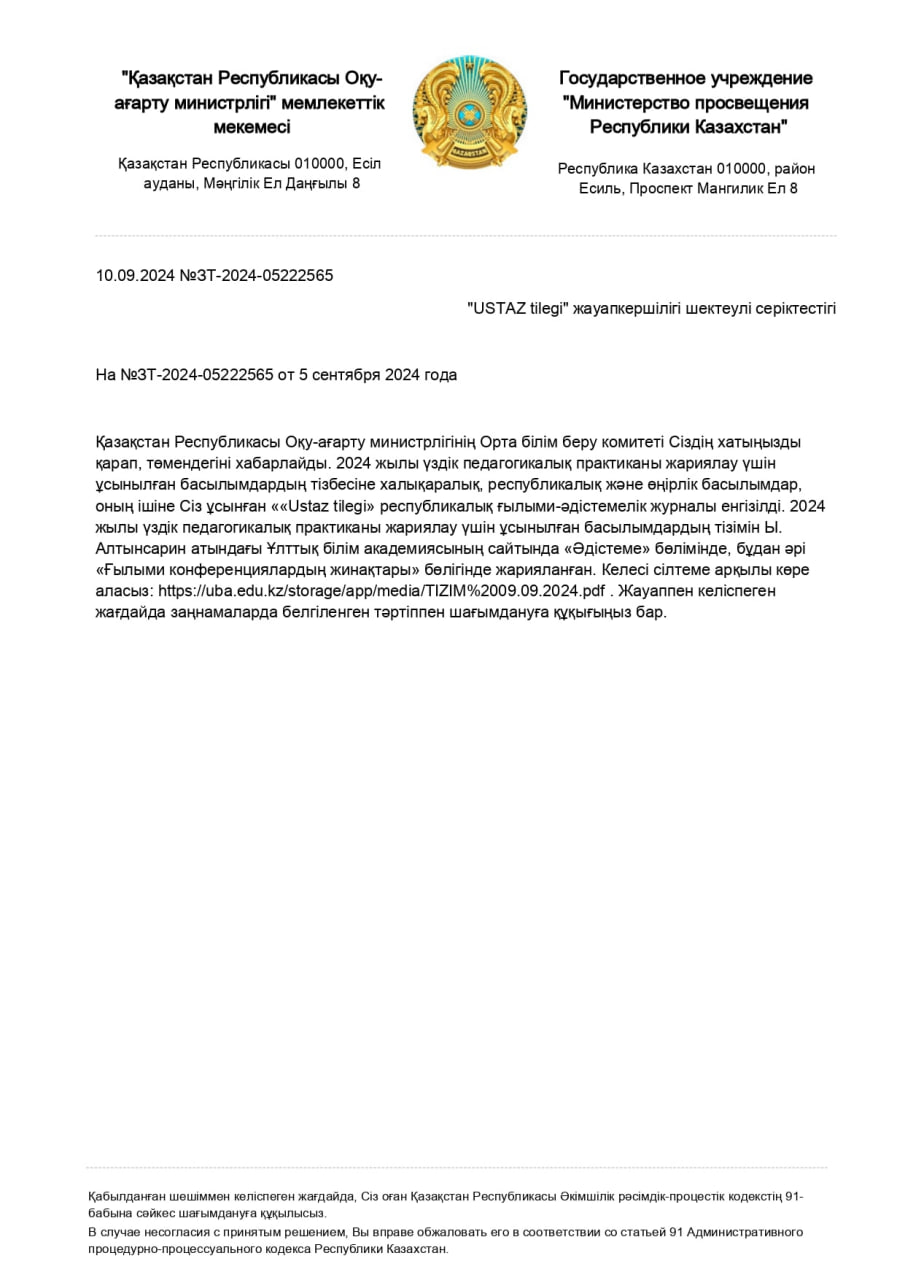70% арзан
30% арзан

жүктеу мүмкіндігіне ие боласыз
Бұл материал сайт қолданушысы жариялаған. Материалдың ішінде жазылған барлық ақпаратқа жауапкершілікті жариялаған қолданушы жауап береді. Ұстаз тілегі тек ақпаратты таратуға қолдау көрсетеді. Егер материал сіздің авторлық құқығыңызды бұзған болса немесе басқа да себептермен сайттан өшіру керек деп ойласаңыз осында жазыңыз
Lesson plan "Eyes open 7" erm 3

Short term plan: term 3
|
Unit: 5 Reading for pleasure |
Lesson 49 |
||
|
Teacher name: |
|
||
|
Date: |
|
||
|
Grade: 7 |
Number present: |
absent: |
|
|
Lesson title |
Reading a biography |
||
|
Learning objectives |
7.1.6.1 organise and present information clearly to others 7.3.8.1 recount some extended stories and events on a growing range of |
||
|
Lesson objectives |
Learners will be able to: - read a biography of Charles Dickens. - read an extract from the Great Expectations. |
||
|
Value links |
"Law and Order" Know the basics of the legal system and human rights |
||
|
Plan |
|||
|
Stages / Time |
Teachers actions |
Students actions |
Assessment criteria |
Resources |
|
Beginning of the lesson Warming-up
3 min. Pre-learning «Brainstorming» method 7 min. |
Organization moment : 1.Greeting. Ask about the weather. The teacher sets the lesson objectives, letting students know what to anticipate from the lesson. Warming up Where are you from? How old are you? What color is it? How many students are there in class? What day of the week today? Lead – In
|
The aim: To develop pupils speaking skills and create friendly atmosphere Students of the class are listed. Students' attention is drawn to the lesson. Students say different words from the picture •Learners remember previous lesson vocabulary •Learners answer the questions |
The teacher to assess learners for their ability. “Good job! Well done!” Formative Assessment
Good job! Descriptor: - remembers the lesson passed Point 1 Assessment criteria - make basic statements related to personal information, people and objects with go. |
Pictures worksheet Picture |
|
Middle of the lesson Presentation part. 30 min |
Ex:1 P:57 Focus their attention on the photograph of Charles Dickens. Ask students to read the biography and complete the fact file. Students can compare answers in pairs before you check them with the class. Differentiation: «Verbal support» method is used to help Ss use new words in the sentences. Ex: 1 P: 57 Write Great Expectations on the board. Point out that this novel, published in 1861, is one of Dickens' most famous works. Elicit or teach that to have an expectation of someone, means to believe that they will achieve something. Ex: 3 P: 57 Ask students the impression we get of the woman from the way Pip describes her. At first we get the sense of something clean and pure everything is white, jewels "lay shining on the table. But then the mood changes. The woman is only wearing one shoe, the wedding dress she is wearing is not white, but 'faded and yellow'. Conclusion during the lesson some tasks differentiated by outcomes of the students and by their abilities. |
Learners read the text about his life and complete the fact sheet. ANSWERS 1 1812 2 London 3 journalist 4 1836 5 Catherine Hogarth 6 1836 A novel 7 novels 8 1870 Learners read the first part of the text and answer the question. ANSWERS 1 three 2 in a dark house; it isn't an attractive place - Pip refers to being 'uncomfortable' and 'afraid'. He says 'no daylight was allowed to get in Learners read the next part of the text and check your answer. ANSWERS A description of a person A conversation between two people. |
Descriptor: - read the text - complete the fact sheet - compare answers in pairs Total: 3 point Descriptor: - read the first part of the text - answer the question Total: 2point Descriptor: - read the text - answer the question Total: 2 point -Make CCQ questions Yes / No Total: 1 point Total: 10 point |
Card Worksheet Students book |
|
End of the lesson 5 min |
FEEDBACK Learners provide feedback on what they have learned at the lesson. Ex: P: Home task: Write the days |
Ss evaluate each other and encourage classmate with phrases like: Well done! Brilliant! Good job! I like it! |
Poster Success
|
|
Short term plan: term 3
|
Unit 5 Reading for pleasure |
Lesson 50 |
||
|
Teacher name: |
|
||
|
Date: |
|
||
|
Grade: 7 |
Number present: |
absent: |
|
|
Lesson title |
Reading a novel |
||
|
Learning objectives |
7.2.5.1 recognise the opinion of the speakers in supported extended talk on a range of general and curricular topics 7.4.1.1 understand the main points in texts on a limited range of unfamiliar general and curricular topics 7.3.3.1 give an opinion at discourse level on a growing range of general and curricular topics |
||
|
Lesson objectives |
Learners will be able to: - practise guessing the meaning of vocabulary from context. - write about the past of a character from Great Expectations. |
||
|
Value links |
"Law and Order" Observance of norms and rules of order and justice understand the need |
||
|
Plan |
|||
|
Stages / Time |
Teachers actions |
Students actions |
Assessment criteria |
Resources |
|
Beginning of the lesson Warming-up
3 min Pre-learning «Brainstorming» method 7 min. |
Organization moment : 1.Greeting. Ask about the weather. The teacher sets the lesson objectives, letting students know what to anticipate from the lesson. Warming up Where are you from? How old are you? What color is it? How many students are there in class? What day of the week today? Lead – In
|
The aim: To develop pupils speaking skills and create friendly atmosphere Students of the class are listed. Students' attention is drawn to the lesson. Determines the topic and purpose of the lesson •Learners remember previous lesson vocabulary Students say different words from the picture Answer the question. |
The teacher to assess learners for their ability. “Good job! Well done!” Formative Assessment
Good job! Descriptor: - know daily routines vocabulary Point 1 Assessment criteria - Learners have met the learning objectives if they can talk about online advertisement |
Pictures worksheet Student’s book |
|
Middle of the lesson Presentation part. 30 min |
Ex: 4 P: 58 Refer students to the word and phrases in the box. Check their understanding of the vocabulary. Make sure students can pronounce veil /veil/. Students then read the whole of the second part of the story and make a note of which items in the box Miss Havisham is wearing. Ex: 5 P: 58 Ask students to look at the photograph of a bride. In pairs, students compare this photograph with the description of Miss Havisham in the extract from Great Expectations, noting both the differences and the similarities. Check answers. Self assessment Differentiation: «Verbal support» method is used to help Ss use new words in the sentences. Ex: 6 P: 58 Put students into pairs to discuss the question of what Pip finds in the other room. Ask students to read the next part of the story to check their answers. Uni Elicit ideas and put them on the board. |
Learners read the text again. Answer the question. ANSWERS Pupils work with a partner. Look at the photo of a bride. Miss Havisham ois also described as a bride. ANSWERS Similarities: they are both wearing a wedding dress, they are both wearing a veil; they both have flowers Differences: Miss Havisham is wearing flowers in her hair, but the bride is holding flowers; Miss Havisham's clothes are old and yellow, but the bride's clothes are white; Miss Havisham is wearing a necklace, but the bride isn't; Miss Havisham is old, but the bride is young; Miss Havisham is very thin, but the bride is healthy Pupils discuss ideas with your partner. Then read the next part of the text to find out. ANSWERS He finds her wedding cake but it is very old. |
Descriptor: - read the text - answer the question Total: 2 point Descriptor: - work with a partner. - Look at the photo of a bride - compare this photograph with the description Total: 3 point Descriptor: - discuss ideas with your partner - read the next part of the Total: 2 point -Make CCQ questions Yes / No Total: 1 point |
Card Worksheet Students book |
|
End of the lesson 5 min |
FEEDBACK Learners provide feedback on what they have learned at the lesson. Ex: P: Home task: Write the days |
Ss evaluate each other and encourage classmate with phrases like: Well done! Brilliant! Good job! I like it! |
Poster Success
|
|
Short term plan: term 3
|
Unit 5 Reading for pleasure |
Lesson 51 |
||
|
Teacher name: |
|
||
|
Date: |
|
||
|
Grade: 7 |
Number present: |
absent: |
|
|
Lesson title |
Get reading |
||
|
Learning objectives |
7.4.1.1 understand the main points in texts on a limited range of unfamiliar general and curricular topics 7.3.8.1 recount some extended stories and events on a growing range of 7.5.3.1 write with moderate grammatical accuracy on a limited range of familiar general and curricular topics; |
||
|
Lesson objectives |
Learners will be able to: - practise guessing the meaning of vocabulary from context. - write about the past of a character from Great Expectations. |
||
|
Value links |
"Law and Order" Ensuring the protection and safety of society understand the importance of law and order as |
||
|
Plan |
|||
|
Stages / Time |
Teachers actions |
Students actions |
Assessment criteria |
Resources |
|
Beginning of the lesson Warming-up
3 min Pre-learning «Brainstorming» method 7 min. |
Organization moment : 1.Greeting. Ask about the weather. The teacher sets the lesson objectives, letting students know what to anticipate from the lesson. Warming up Where are you from? How old are you? What color is it? How many students are there in class? What day of the week today? revise the vocabulary from the previous Lead – In
|
. The aim: To develop pupils speaking skills and create friendly atmosphere Efficiency: By wishing each other they feel better and feel the support of others Students of the class are listed. Students' attention is drawn to the lesson. Learners remember previous lesson vocabulary Determines the topic and purpose of the lesson Students say different words from the picture |
The teacher to assess learners for their ability. “Good job! Well done!” Formative Assessment
Good job! Descriptor: - can tell the time Point 1 Assessment criteria - Learners have met the learning objectives if they can talk about persons character |
Pictures worksheet Picture |
|
Middle of the lesson Presentation part. 30 min |
Ex:7 P: 59 Read out the information in the Get reading box. Tell students that using context to guess the meaning of new vocabulary is a very useful skill - it encourages students to see how the meaning of a word is dependent on those it is used with. A word can have many (sometimes contradictory) meanings, which can only be understood by an analysis of the context that word is used in. Ex: 8 P: 59 Give students a couple of minutes to read through items 1-6. Students then work alone to read through the whole extract from Great Expectations. Students can work in pairs to choose the best answer in 1-6. Make sure they write the line of the text that helps them choose their answer. Ex: 9 P: 59 Refer students back to the photograph on page 56 of the actress portraying Miss Havisham. Ask students to work alone to decide whether the photograph is an exact match of the description in the text of Miss Havisham and her house. Students can compare their answers in pairs before you check answers with the class. Differentiation: «Verbal support» method is used to help Ss use new words in the sentences. |
Pupils find the underlined words in the text. Then match them with their meanings. ANSWERS 1 c 2 h 3 f 4 a 5 e 6 b 7 d 8 g Pupils look at the whole text. Choose the correct answer. ANSWERS 1 a 2 b 3 b 4 c 5 a 6 b Pupils look at the photo on page 56. Answer the question. ANSWERS Similarities: Miss Havisham is wearing an old wedding dress; she has a necklace; she is old and thin; the room is dark; there is a wedding cake and it's falling apart Differences: the cake in the text is black; there are spiders in the text |
Descriptor: - find the underlined words - match them with their meanings Total: 2 point Descriptor: - look at the whole text - choose the correct answer Total: 2 point Descriptor: - look at the photo - answer the question. Total: 1 point -Make CCQ questions Yes / No |
Card Worksheet |
|
End of the lesson 5 min |
FEEDBACK Learners provide feedback on what they have learned at the lesson. Ex: Home task: |
Ss evaluate each other and encourage classmate with phrases like: Well done! Brilliant! Good job! I like it! |
Poster Success
|
|
Short term plan: term 3
|
Unit 6: Entertainment and Media |
Lesson 52 |
||
|
Teacher name: |
|
||
|
Date: |
|
||
|
Grade: 7 |
Number present: |
absent: |
|
|
Lesson title |
Vocabulary: art and media |
||
|
Learning objectives |
7.4.2.1 understand specific information and detail in texts on a range of familiar general and curricular topics; 7.3.3.1 give an opinion at discourse level on a growing range of general and curricular topics |
||
|
Lesson objectives |
Learners will be able to: - learn vocabulary for art and media. - talk about art and media. |
||
|
Value links |
"Law and Order" Know the basics of the legal system and human rights |
||
|
Plan |
|||
|
Stages / Time |
Teachers actions |
Students actions |
Assessment criteria |
Resources |
|
Beginning of the lesson Warming-up
3 min Pre-learning «Brainstorming» method 7 min. |
Organization moment : 1.Greeting. Ask about the weather. The teacher sets the lesson objectives, letting students know what to anticipate from the lesson. Warming up Where are you from? How old are you? What color is it? How many students are there in class? What day of the week today? revise the language from the previous lesson Lead – In
|
The aim: To develop pupils speaking skills and create friendly atmosphere Efficiency: By wishing each other they feel better and feel the support of others Students of the class are listed. Students' attention is drawn to the lesson. • Learners talk about daily routines previous lesson vocabulary Determines the topic and purpose of the lesson Students say different words from the picture |
The teacher to assess learners for their ability. “Good job! Well done!” Formative Assessment
Good job! Descriptor: - talk about daily routines Point 1 Assessment criteria - Learners have met the learning objectives if they can talk about natural features |
Pictures worksheet Student’s book |
|
Middle of the lesson Presentation part. 30 min |
Ex:1 P:61 Put students into pairs to match the words with the photos. If you have the Presentation Plus software, put the photos on the board and ask students to come up to the board in turn to match the words with the photos. Play the recording for students to listen, check their answers and repeat the words. Pay particular attention to students' pronunciation of mural /'mjuər(ə)l/, statue /'statju:/, sculpture /'sk^lptfa/, busker /'baskər/ and juggler Ex: 2 P: 61 Ask students to copy the chart into their notebooks. Put students into pairs to complete the chart using the words and phrases from Exercise 1. Ex: 3 P: 61 Tell students they are going to listen to three people talking about art and media. Play the recording. Students listen and say what each person talked about. Ex: 4 P: 61 Read out the information in the Get it right! box. Explain that other common verbs do not use to after there, e.g. play, sit, walk: Where shall we play? Let's play there. / Please sit there. / I want to walk there. Read out the questions and example answer. Put students into pairs to take it in turns to ask and answer the questions |
Pupils match the words in the box with the art around us. ANSWERS b sculpture c gallery/exhibition d graffiti e radio f newspaper g concert h DJ i journalist į painting k gallery The word describing where we see paintings is "gallery". Pupils complete the chart with the words. Answer the question. ANSWERS
Pupils listen to three students talking about art and media. ANSWERS Alison: newspaper, radio, journalist Philip: painting, gallery, exhibition, sculptures Zara: buskers, graffiti, DJ, concert Pupils ask and answer with your partner. ANSWERS Students own answer. |
Descriptor: - match the words - answers and repeat the words. Total: 2 point Descriptor: - complete the chart - answer the question. Total: 2 point Descriptor: - listen to three students Total: 1 point Descriptor: - ask and answer with your partner Total: 2 point -Make CCQ questions Yes / No Total: 1 point Total: 10 point |
Card Worksheet Students book |
|
End of the lesson 5 min |
FEEDBACK Learners provide feedback on what they have learned at the lesson. Ex: Home task: |
Ss evaluate each other and encourage classmate with phrases like: Well done! Brilliant! Good job! I like it! |
Poster Success
|
|
Short term plan: term 3
|
Unit: 6 Entertainment and Media |
Lesson 53 |
||
|
Teacher name: |
|
||
|
Date: |
|
||
|
Grade:7 |
Number present: |
absent: |
|
|
Lesson title |
Reading: Everyone’s an artist |
||
|
Learning objectives |
7.2.5.1 recognize the opinion of the speakers in supported extended talk on a range of general and curricular topics; 7.3.3.1 give an opinion at discourse level on a growing range of general and curricular topics 7.4.3.1 understand the detail of an argument on a growing range of familiar general and curricular topics, including some extended texts |
||
|
Lesson objectives |
Learners will be able to: - read an online debate about what art is. - learn some collocations. - have a debate about art. |
||
|
Value links |
"Law and Order" Observance of norms and rules of order and justice understand the need |
||
|
Plan |
|||
|
Stages / Time |
Teachers actions |
Students actions |
Assessment criteria |
Resources |
|
Beginning of the lesson Warming-up
3 min Pre-learning «Brainstorming» method 7 min. |
Organization moment : 1.Greeting. Ask about the weather. The teacher sets the lesson objectives, letting students know what to anticipate from the lesson. Warming up Where are you from? How old are you? What color is it? How many students are there in class? What day of the week today? Revise the vocabulary from the previous lesson Lead – In
|
The aim: To develop pupils speaking skills and create friendly atmosphere Efficiency: By wishing each other they feel better and feel the support of others Students of the class are listed. Students' attention is drawn to the lesson. Learners talk about days of the week previous lesson vocabulary Determines the topic and purpose of the lesson Students say different words from the picture |
The teacher to assess learners for their ability. “Good job! Well done!” Formative Assessment
Good job! Descriptor: - talk about days of the we Total: 1 point Assessment criteria - Learners have met the learning objectives if they can talk about |
Pictures worksheet picture |
|
Middle of the lesson Presentation part. 30 min |
Ex:1 P:62 Ask students to open their books at page 62. Put students into pairs to discuss the questions. Encourage students to give reasons for their opinions. Ask a few students to tell the class about their partner's views Ex: 2 P: 62 Tell students they are going to read an online debate between Josh and Kirsten about what art is. Give students time to read the debate and then elicit answers to the question from the class. Refer students to the information in the FACT! box about the British graffiti artist Banksy. Tell students that Banksy chooses to remain anonymous and that he has sold his work for large sums of money. Ex: 3 P: 62 •Ask students to read the sentences and then read the debate again. Put students into pairs to decide whether the sentences are true or false and to correct the false sentences. Nbridge Ex: 4 P: 62 Read out the example collocation and then complete the remaining collocations with the whole class. Put students into pairs to complete the sentences with the collocations. Pair stronger students with weaker students for this task. Check answers with the class. To extend the work on the vocabulary, ask students to turn to the Vocabulary Bank on page 126 and do the exercises for Explore collocations. |
Pupils work with a partner. Look at the pictures and answer the questions. ANSWERS Students own answer Pupils read the debate. Answer the question. ANSWERS Josh thinks that art is anything that is creative. Kirsten thinks that art is very hard and not many people can do it well. Pupils read the article again. Mark the statements. Correct the false sentences. ANSWERS 2 F (He thinks photos that friends post online are creative.) 3T 4 T 5 F (She thinks art is the result of years of practise.) 6 F (She thinks art is very hard, and not many people can Pupils find the collocations in the text. Match the words in the box. Then complete the sentences. ANSWERS post online, passionate about, take photos, make money work hard, 2 work hard 3 post, online 4 take photos 5 make money 6 passionate about |
Descriptor: - work with a partner. - look at the pictures - answer the questions. Total: 3 point Descriptor: - read the debate - answer the question. Total: 2 point Descriptor: - read the article - mark the statements Total: 2 point Descriptor: - find the collocations in the text - match the words Total: 2 point -Make CCQ questions Yes / No Total: 10 point |
Card Worksheet Vocabulary card |
|
End of the lesson 5 min |
FEEDBACK Learners provide feedback on what they have learned at the lesson. Ex: Home task: |
Ss evaluate each other and encourage classmate with phrases like: Well done! Brilliant! Good job! I like it! |
Poster Success |
|
Short term plan: term 3
|
Unit 6 Entertainment and Media |
Lesson 54 |
||
|
Teacher name: |
|
||
|
Date: |
|
||
|
Grade: 7 |
Number present: |
absent: |
|
|
Lesson title |
Language focus: Present perfect with for or since |
||
|
Learning objectives |
7.1.3.1 respect different points of view 7.2.3.1 understand with some support most of the detail of an argument in extended talk on a limited range of general and curricular topics 7.3.3.1 give an opinion |
||
|
Lesson objectives |
Learners will be able to: - learn the use of the present perfect with for and since. - learn the difference between for and since. - learn the difference between the present perfect and the past simple. |
||
|
Value links |
"Law and Order" Ensuring the protection and safety of society understand the importance of law and order as |
||
|
Plan |
|||
|
Stages / Time |
Teachers actions |
Students actions |
Assessment criteria |
Resources |
|
Beginning of the lesson Warming-up
3 min Pre-learning «Brainstorming» method 7 min. |
Organization moment : 1.Greeting. Ask about the weather. The teacher sets the lesson objectives, letting students know what to anticipate from the lesson. Warming up Where are you from? How old are you? What color is it? How many students are there in class? What day of the week today? Revise the language of the previous lesson. Lead – In
|
The aim: To develop pupils speaking skills and create friendly atmosphere Efficiency: By wishing each other they feel better and feel the support of others Students of the class are listed. Students' attention is drawn to the lesson. Determines the topic and purpose of the lesson Learners talk about favourite dayprevious lesson vocabulary Students say different words from the picture and count one to hundred |
The teacher to assess learners for their ability. “Good job! Well done!” Formative Assessment
Good job! Descriptor: - talk about favourite day Total: 1 point Assessment criteria - Learners have met the learning objectives if they can talk about |
Pictures worksheet Student’s book |
|
Middle of the lesson Presentation part. 30 min |
Ex:1 P: 63 Ask students to open their books at page 63. Tell them that the sentences are all from the text on page 62. Put students into pairs to complete the remaining sentences. Check answers and then go through the information in the grammar tip box. Elicit further example sentences with for and since to test students' understanding of the difference between the two words. Ex: 2 P: 63 Tell students to work alone to complete the sentences with for or since Ex: 3 P: 63 Ask: What do you know about Berlin and the Berli Wall? Elicit students' ideas and write them on the board. Ask students to work in pairs to complete the text with the correct present perfect or past simple form of the verbs in brackets. Play the recording for students to listen and check. Ex: 4 P: 63 Ask: What do you know about Istanbul? Elicit students' ideas and write them on the board. Allow students time to read the text through and see if any of their ideas are mentioned in the text. S Ask students to work in pairs to choose the correct answers. es Play the recording for students to listen and check. |
Pupils complete the sentences from the reading with for or since. ANSWERS 1 since 2 for Pupils look at the table and complete the sentences with for or since. ANSWERS 1 since 2 for 3 since 4 since 5 for Pupils complete the conversation with the present perfect or past simple of the verbs in brackets. ANSWERS 1 (did), get 2 arrived 3 have been 4 Have, been 5 went Pupils circle the correct words to complete the text. Then listen and check ANSWERS 2 since 3 got 4 went 5 was 6 were 7 haven't heard 8 left 9 have been 10 since 11 visited 12 crossed 13 wanted 14 since |
Descriptor: - complete the sentences - use for or since Total: 2 point Descriptor: - look at the table - complete the sentences with for or since. Total: 2 point Descriptor: - complete the conversation -use the correct form Total: 2 point Descriptor: - circle the correct words - complete the text. Total: 3 point -Make CCQ questions Yes / No Total: 10 point |
Card Worksheet Students book |
|
End of the lesson 5 min |
FEEDBACK Learners provide feedback on what they have learned at the lesson. Ex: Home task: |
Ss evaluate each other and encourage classmate with phrases like: Well done! Brilliant! Good job! I like it! |
Poster Success |
|
Short term plan: term 3
|
Unit 6 Entertainment and Media |
Lesson 55 |
||
|
Teacher name: |
|
||
|
Date: |
|
||
|
Grade: 7 |
Number present: |
absent: |
|
|
Lesson title |
Vocabulary: instruments |
||
|
Learning objectives |
7.1.1.1 use speaking and listening skills to solve problems creatively and cooperatively in groups 7.3.6.1 begin to link comments with some flexibility to what others say at sentence and discourse level in pair, group and whole class exchanges 7.4.3.1 understand the detail of an argument on a growing range of familiar general and curricular topics, including some extended texts; |
||
|
Lesson objectives |
Learners will be able to: - learn vocabulary for instruments. - listen to an interview with a musician. - do a music survey. |
||
|
Value links |
"Law and Order" Know the basics of the legal system and human rights |
||
|
Plan |
|||
|
Stages / Time |
Teachers actions |
Students actions |
Assessment criteria |
Resources |
|
Beginning of the lesson Warming-up
3 min Pre-learning «Brainstorming» method 7 min. |
Organization moment : 1.Greeting. Ask about the weather. The teacher sets the lesson objectives, letting students know what to anticipate from the lesson. Warming up Where are you from? How old are you? What color is it? How many students are there in class? What day of the week today? Revise the language of the previous lesson. Lead – In
|
The aim: To develop pupils speaking skills and create friendly atmosphere Efficiency: By wishing each other they feel better and feel the support of others Students of the class are listed. Students' attention is drawn to the lesson. • Learners write the numbers from previous lesson Determines the topic and purpose of the lesson Students say different words from the picture |
The teacher to assess learners for their ability. “Good job! Well done!” Formative Assessment
Good job! Descriptor: -know key phrases - can make sentence - know vocabulary of previous lesson Total: 1 point Assessment criteria - Learners have met the learning objectives if they can: To talk about |
Pictures worksheet Student’s book |
|
Middle of the lesson Presentation part. 30 min |
Ex:1 P:64 Ask students to open their books at page 64. Ask students to work in pairs to match the instruments listed with the pictures. Play the recording for students to listen, check their answers and repeat the words. Ex: 2 P: 64 Put students into groups to ask and answer the questions. Ask one member of each group to share their answers with the class. To extend the work on the vocabulary, you could ask students to turn to the Vocabulary Bank on page 126 and do the exercises for Instruments. Ex: 4 P: 64 Tell students they are going to listen to an interview with the musician in the photo. dge Un Remind students that a good way to prepare for listening exercises is to think of some key words they might expect to hear. Play the recording for students to check their answers to Exercise 3. Ex: 5 P: 64 Give students time to read the questions. Play the recording again for students to listen and answer the questions. |
Pupils match the words in the box with the instruments in the pictures. Then listen, check and repeat. ANSWERS 1 clarinet 2 saxophone 3 guitar 4 banjo 5 flute 6 violin 7 tambourine 8 piano 9 drums 10 trumpet 11 keyboards 12 mouth organ 13 recorder 14 cello Pupils work with a partner. Answer the questions. ANSWERS Students own answer Pupils listen to a journalist, Marcia, interviewing Leo. ANSWERS guitar, drum, tambourine, banjo, mouth organ; in the street, in clubs and concert halls Pupils listen again and answer the questions. ANSWERS 1 She's at the Auckland Buskers Festival. 2 Because he plays so many instruments. 3 Leo's banjo is new. 4 About seven hours. 5 Jazz and blues, folk and country as well as rock music. 6 He's never played the cello or the violin. |
Descriptor: - match the words - listen, check and repeat Total: 2 point Descriptor: - work with a partner - answer the questions. Total: 2 point Descriptor: - listen to a journalist - check your ideas Total: 2 point Descriptor: - listen again - answer the questions Total: 2 point -Make CCQ questions Yes / No |
Card Worksheet Students book |
|
End of the lesson 5 min |
FEEDBACK Learners provide feedback on what they have learned at the lesson. |
Ss evaluate each other and encourage classmate with phrases like: Well done! Brilliant! Good job! I like it! |
Poster Success |
|
Short term plan: term 3
|
Unit 6 Entertainment and Media |
Lesson 56 |
||
|
Teacher name: |
|
||
|
Date: |
|
||
|
Grade: 7 |
Number present: |
absent: |
|
|
Lesson title |
Language focus: Present perfect with ever / never |
||
|
Learning objectives |
7.3.5.1 keep interaction with peers to negotiate, agree and organize priorities and plans for completing classroom tasks 7.5.3.1 write with moderate grammatical accuracy on a limited range of familiar general and curricular topics; 7.6.5.1 use questions which include a variety of different tense on a range of familiar general and curricular topics; |
||
|
Lesson objectives |
Learners will be able to: - learn the present perfect with ever/never. - ask and answer questions in the present perfect about experiences. |
||
|
Value links |
"Law and Order" Observance of norms and rules of order and justice understand the need |
||
|
Plan |
|||
|
Stages / Time |
Teachers actions |
Students actions |
Assessment criteria |
Resources |
|
Beginning of the lesson Warming-up
3 min Pre-learning «Brainstorming» method 7 min. |
Organization moment : 1.Greeting. Ask about the weather. The teacher sets the lesson objectives, letting students know what to anticipate from the lesson. Warming up Where are you from? How old are you? What color is it? How many students are there in class? What day of the week today? Revise the language of the previous lesson. Lead – In
|
The aim: To develop pupils speaking skills and create friendly atmosphere Efficiency: By wishing each other they feel better and feel the support of others Students of the class are listed. Students' attention is drawn to the lesson. • Learners write the numbers from previous lesson Determines the topic and purpose of the lesson Students say different words from the picture |
The teacher to assess learners for their ability. “Good job! Well done!” Formative Assessment
Good job! Descriptor: -know key phrases - can make sentence - know vocabulary of previous lesson Total: 1 point Assessment criteria - Learners have met the learning objectives if they can: To talk about |
Pictures worksheet Student’s book |
|
Middle of the lesson Presentation part. 30 min |
Ex:1 P:65 Ask students to open their books at page 65. Tell students that the examples are from the listening on page 64. Put students into pairs to complete the sentences with ever or never. Check answers. Ex: 2 P: 65 Refer students to the completed questions in Exercise 1. Ask students to translate ever into their language and say where that word goes in the question. Ex: 3 P: 65 Ask students to work alone to using ever. Help weaker students as straightforward as 1 Check answers. Ex: 4 P: 65 To help weaker students, complete the first one as an example. Put students into pairs to do the exercise. Check answers. Students can then ask and answer questions in the pairs. the three |
Pupils complete the examples from the listening ANSWERS 2 Have you ever played at this festival? 3 I've never played here before 4 Have you ever played in a group? 5 I've never played the cello or the violin. Pupils look at the question in ex 1. Answer the question. ANSWERS before the main verb Pupils rewrite the questions putting ever in the right position. ANSWERS 1 Have you ever met a famous musician? 2 Have you ever vates England? 3. Has your town ever had a music festival? 4 Have your parents ever owned a pet> Pupils make sentences. For pictures 1-3, write sentences using never. For pictures 4-6, write questions using ever. Ask and answer with your partner. ANSWERS 1 I've never painted graffiti on a 2 He's never played the drums. 3 She's never won a race. 4 Have you ever climbed to the top of a mountain? 5 Have you ever been to a concert? 6 Have you ever painted a house |
Descriptor: - complete the examples - complete the sentences with ever or never Total: 2 point Descriptor: - look at the question - answer the questions. Total: 2 point Descriptor: - rewrite the questions putting ever - check your answer Total: 2 point Descriptor: - make sentences - use never and ever Total: 2 point -Make CCQ questions Yes / No |
Card Worksheet Students book |
|
End of the lesson 5 min |
FEEDBACK Learners provide feedback on what they have learned at the lesson. |
Ss evaluate each other and encourage classmate with phrases like: Well done! Brilliant! Good job! I like it! |
Poster Success |
|
Short term plan: term 3
|
Unit 6 Entertainment and Media |
Lesson 57 |
||
|
Teacher name: |
|
||
|
Date: |
|
||
|
Grade: 7 |
Number present: |
absent: |
|
|
Lesson title |
Discover culture. A world of music |
||
|
Learning objectives |
7.5.3.1 write with moderate grammatical accuracy on a limited range of familiar general and curricular topics; 7.6.9.1 use appropriately a variety of active and passive simple present and past forms and past perfect simple forms on a range of familiar general and curricular topics |
||
|
Lesson objectives |
Learners will be able to: - watch a video about musical instruments in Mexico, India and Australia. - talk about the musical instruments in the video and traditional instruments in my country |
||
|
Value links |
"Law and Order" Ensuring the protection and safety of society understand the importance of law and order as |
||
|
Plan |
|||
|
Stages / Time |
Teachers actions |
Students actions |
Assessment criteria |
Resources |
|
Beginning of the lesson Warming-up
3 min Pre-learning «Brainstorming» method 7 min. |
Organization moment : 1.Greeting. Ask about the weather. The teacher sets the lesson objectives, letting students know what to anticipate from the lesson. Warming up Where are you from? How old are you? What color is it? How many students are there in class? What day of the week today? Revise the language of the previous lesson. Lead – In
|
The aim: To develop pupils speaking skills and create friendly atmosphere Efficiency: By wishing each other they feel better and feel the support of others Students of the class are listed. Students' attention is drawn to the lesson. Learners write the numbers from previous lesson Determines the topic and purpose of the lesson Students say different words from the picture |
The teacher to assess learners for their ability. “Good job! Well done!” Formative Assessment
Good job! Descriptor: -know key phrases - can make sentence - know vocabulary of previous lesson Total: 1 point Assessment criteria - Learners have met the learning objectives if they can: To talk about |
Pictures worksheet Student’s book |
|
Middle of the lesson Presentation part. 30 min |
Ex:1 P:66 Ask students to open their books at page 66, look at the images and complete the table with the information. If you have the Presentation Plus software, put this exercise up on the interactive whiteboard and complete the exercise with the class. If you choose to do the exercise in this way, do not confirm or reject students' ideas as they will check them in Exercise 2 by watching the video Ex: 2 P: 66 Play the video for students to check their answers to Exercise 1. Check students can pronounce sitar /'sıta:/, didgeridoo /,dıd3(ə)rr'du:/, trumpet /'trampıt Ex: 3 P: 66 Check students' understanding of the words in the box. Put students into pairs to match the sentences with the words. Check answers. Ex: 4 P: 66 Play the video again for students to check their answers. |
Pupils look at the images of these musical instruments and complete the table with information below. ANSWERS Students own answer. Pupils watch the video and check your answers ANSWERS
Pupils match the information to the three different musical traditions or instruments. ANSWERS 1 Mariachi 2 sitar 3 sitar 4 Mariachi 5 didgeridoo 6 didgeridoo Pupils test your memory. Mark the sentences. ANSWERS 1 T 2 F (There are guitars, violins and trumpets in a Mariachi group.) 3T 4T |
Descriptor: - look at the images of these musical instruments - complete the table with information Total: 2 point Descriptor: -work in pairs. - match the information Total: 2 point Descriptor: - test your memory. - mark the sentences. Total: 2 point Descriptor: - mark the sentences. Total: 2 point -Make CCQ questions Yes / No |
Card Worksheet Students book |
|
End of the lesson 5 min |
FEEDBACK Learners provide feedback on what they have learned at the lesson. Ex: Home task: |
Ss evaluate each other and encourage classmate with phrases like: Well done! Brilliant! Good job! I like it! |
Poster Success
|
|
Short term plan: term 3
|
Unit 6 Entertainment and Media |
Lesson 58 |
||
|
Teacher name: |
|
||
|
Date: |
|
||
|
Grade: 7 |
Number present: |
absent: |
|
|
Lesson title |
Reading: Burning man festival |
||
|
Learning objectives |
7.3.3.1 give an opinion at discourse level on a growing range of general and curricular topics 7.5.4.1 use with some support style and register appropriate to a limited variety of written genres on general and curricular topics; |
||
|
Lesson objectives |
Learners will be able to: - read an article about the Burning Man Festival in the USA. - talk about festivals. - write about the last festival I went to. |
||
|
Value links |
"Creativity and Innovation" Monitoring, measuring, conducting experiments and experiments ability; |
||
|
Plan |
|||
|
Stages / Time |
Teachers actions |
Students actions |
Assessment criteria |
Resources |
|
Beginning of the lesson Warming-up
3 min Pre-learning «Brainstorming» method 7 min. |
Organization moment : 1.Greeting. Ask about the weather. The teacher sets the lesson objectives, letting students know what to anticipate from the lesson. Warming up Where are you from? How old are you? What color is it? How many students are there in class? What day of the week today? Revise the language of the previous lesson. Lead – In
|
The aim: To develop pupils speaking skills and create friendly atmosphere Efficiency: By wishing each other they feel better and feel the support of others Students of the class are listed. Students' attention is drawn to the lesson. • Learners write the numbers from previous lesson Determines the topic and purpose of the lesson Students say different words from the picture |
The teacher to assess learners for their ability. “Good job! Well done!” Formative Assessment
Good job! Descriptor: -know key phrases - can make sentence - know vocabulary of previous lesson Total: 1 point Assessment criteria - Learners have met the learning objectives if they can: To talk about |
Pictures worksheet Student’s book |
|
Middle of the lesson Presentation part. 30 min |
Ex:1 P:67 Put students into pairs to look at the photos and answer the question. You could introduce some vocabulary here to help students describe the photos, e.g. statue, balloons, desert Ex: 2 P: 67 Ask students to read the text to check their answers to Exercise 1. Ex: 3 P: 67 Before students do the exercise, check their understanding of the following vocabulary: goggles (noun): glasses which fit closely to the face and which protect the eyes from dust, water, etc. dust (noun): a fine, dry powder made up of particles of earth or other matter chain (noun): a series of objects, such as metal rings, linked together. Ask students to read the FAQs about The Burning Man Festival, then work in pairs to match the questions to the paragraphs in the text. Ex: 4 P: 67 Tell students that get up is an example of a phrasal verb, i.e. a phrase made up of a verb and a preposition or adverb. Explain that phrasal verbs have very specific meanings and are very common in informal written and spoken English. Elicit further examples of phrasal verbs and put them on the board, e.g. wake up, turn off, look for |
Pupils work with a partner ANSWERS Students own answer. Pupils read the text and check your answers. ANSWERS People build a wooden statue of a person and they burn it. Pupils match the questions to the answers ANSWERS 2B 3F 4A 5C 6E Pupils look at the highlighted words in the text. ANSWERS 2 dressed 3 light 4 show 5 set 6 picked |
Descriptor: - work with a partner Total: 2 point Descriptor: - read the text - check your answers Total: 2 point Descriptor: - match the questions Total: 2 point Descriptor: - look at the highlighted words Total: 2 point -Make CCQ questions Yes / No |
Card Worksheet Students book |
|
End of the lesson 5 min |
FEEDBACK Learners provide feedback on what they have learned at the lesson. Ex: Home task: |
Ss evaluate each other and encourage classmate with phrases like: Well done! Brilliant! Good job! I like it! |
Poster Success
|
|
Short term plan: term 3
|
Unit 6 Entertainment and Media |
Lesson 59 |
||
|
Teacher name: |
|
||
|
Date: |
|
||
|
Grade: 7 |
Number present: |
absent: |
|
|
Lesson title |
Speaking: Invitations and arrangements |
||
|
Learning objectives |
7.2.5.1 recognise the opinion of the speakers in supported extended talk on a range of general and curricular topics 7.4.5.1 deduce meaning from context in short texts on a growing range of familiar general and curricular topics 7.3.6.1 begin to link comments with some flexibility to what others say at sentence and discourse level in pair, group and whole class exchanges |
||
|
Lesson objectives |
Learners will be able to: - watch teenagers taking about going to concerts. - listen to a conversation about invitations and arrangements. - practise inviting people to do things and making arrangements. |
||
|
Value links |
"Creativity and Innovation" Ability to find optimal ways to solve educational tasks to use new and already familiar algorithms combining, using them in solving non-standard problems |
||
|
Plan |
|||
|
Stages / Time |
Teachers actions |
Students actions |
Assessment criteria |
Resources |
|
Beginning of the lesson Warming-up
3 min Pre-learning «Brainstorming» method 7 min. |
Organization moment : 1.Greeting. Ask about the weather. The teacher sets the lesson objectives, letting students know what to anticipate from the lesson. Warming up Where are you from? How old are you? What color is it? How many students are there in class? What day of the week today? Revise the language of the previous lesson. Lead – In
|
The aim: To develop pupils speaking skills and create friendly atmosphere Efficiency: By wishing each other they feel better and feel the support of others Students of the class are listed. Students' attention is drawn to the lesson. • Learners write the numbers from previous lesson Determines the topic and purpose of the lesson Students say different words from the picture |
The teacher to assess learners for their ability. “Good job! Well done!” Formative Assessment
Good job! Descriptor: -know key phrases - can make sentence - know vocabulary of previous lesson Total: 1 point Assessment criteria - Learners have met the learning objectives if they can: To talk about |
Pictures worksheet Student’s book |
|
Middle of the lesson Presentation part. 30 min |
Ex:1 P:68 Ask students to open their books at page 68. Tell students they are going to watch some teenagers answering the following question: Have you ever been to a concert? Give students some time to look at the questions and then play the video. Students work alone to answer the questions. They can compare answers in pairs before you check answers with the class Ex: 2 P: 68 Put students into pairs to ask and answer the question. Encourage them to ask additional questions, e.g. What did you think of the concert? Ask some students to report back to the class on what their partner said Ex: 3 P: 68 Tell students they are going to listen to Fran and Nicky making an arrangement. Play the recording. Students listen and answer the question. Check answers. Ex: 4 P: 68 Students can work alone to complete the conversation using the phrases in the Useful language box. Ask stronger students to try to complete the gaps in the conversation without looking at the phrases in box. Ex: 5 P: 68 Play the recording again for students to check their answers to Exercise 4. |
Pupils watch the teenagers in the video. Answer the question. ANSWERS a 3 b 2 C 1 Pupils answer the question. ANSWERS Students own answer. Pupils listen to Fran and Nicky making an arrangement. Answer the question. ANSWERS to go to a concert Pupils complete the conversation with the useful language. ANSWERS Students own answer. Pupils listen again and check your answers. ANSWERS 2 why not 3 Sounds 4 shall we 5 Let's go 6 How about 7 Shall I 8 great idea |
Descriptor: - watch the video - answer the question Total: 2 point Descriptor: - answer the question. Total: 2 point Descriptor: - listen to Fran and Nicky - answer the question Total: 2 point Descriptor: - complete the conversation - complete the gaps Total: 2 point Descriptor: - listen again - check the answers Total: 2 point -Make CCQ questions Yes / No |
Card Worksheet Students book |
|
End of the lesson 5 min |
FEEDBACK Learners provide feedback on what they have learned at the lesson. Ex: Home task: |
Ss evaluate each other and encourage classmate with phrases like: Well done! Brilliant! Good job! I like it! |
Poster Success
|
|
Short term plan: term 3
|
Unit 6 Entertainment and Media |
Lesson 60 |
||
|
Teacher name: |
|
||
|
Date: |
|
||
|
Grade: 7 |
Number present: |
absent: |
|
|
Lesson title |
Writing: an internet post |
||
|
Learning objectives |
7.3.6.1 begin to link comments with some flexibility to what others say at sentence and discourse level in pair, group and whole class exchanges 7.5.7.1 use with minimal support appropriate layout at text level for a growing range of written genres on familiar general and curricular topics |
||
|
Lesson objectives |
Learners will be able to: - read a blog about a concert. - learn about avoiding repetition in writing. - write a blog post about a concert I have been to. |
||
|
Value links |
"Creativity and Innovation" Use of various cognitive tools, knowledge about the world be able to collect (linguistic, reading culture, information, service in the digital environment) |
||
|
Plan |
|||
|
Stages / Time |
Teachers actions |
Students actions |
Assessment criteria |
Resources |
|
Beginning of the lesson Warming-up
3 min Pre-learning «Brainstorming» method 7 min. |
Organization moment : 1.Greeting. Ask about the weather. The teacher sets the lesson objectives, letting students know what to anticipate from the lesson. Warming up Where are you from? How old are you? What color is it? How many students are there in class? What day of the week today? Revise the language of the previous lesson. Lead – In
|
The aim: To develop pupils speaking skills and create friendly atmosphere Efficiency: By wishing each other they feel better and feel the support of others Students of the class are listed. Students' attention is drawn to the lesson. Learners write the numbers from previous lesson Determines the topic and purpose of the lesson Students say different words from the picture |
The teacher to assess learners for their ability. “Good job! Well done!” Formative Assessment
Good job! Descriptor: -know key phrases - can make sentence - know vocabulary of previous lesson Total: 1 point Assessment criteria - Learners have met the learning objectives if they can: To talk about |
Pictures worksheet Student’s book |
|
Middle of the lesson Presentation part. 30 min |
Ex:1 P:69 Ask students to open their books at page 69. If you have the Presentation Plus software, put the photos on the board and ask students to describe them. Ask students to read Alba's blog about a concert she went to in order to find out whether she enjoyed it. Check the answer with the class. You could then tell students that the word gig is a very common informal alternative for concert. Ex: 2 P: 69 Ask students to read Alba's blog again. Put students into pairs to answer the questions. Encourage students to underline in the blog post any information relating to the questions. Check answers. Ex: 3 P: 69 Go through the information in the Useful language box and ask students what they remember about Avoiding Repetition (1), which featured in Unit 2. Remind students that avoiding repeating words in a text is done to make that text more interesting. Read out the question and elicit the answer from the class. Ex: 4 P: 69 Read out the example sentence. Students work alone to complete the sentences. Students can compare answers in pairs before you check answers with the class. |
Pupils look at the photo and read Alba’s blog about a concert. Answer the question. ANSWERS Yes Pupils read Alba’s description of the concert. Answer the question. ANSWERS 1 yes 2 yes 3 no 4 yes 5 no 6 yes 7 yes 8 no Pupils look at the Useful Language box. Answer the question. ANSWERS nouns Pupils complete the sentences with one or ones ANSWERS 2 one 3 one 4 one 5 ones 6 one, ones |
Descriptor: - look at the photo - answer the question Total: 2 point Descriptor: - read Alba’s description - answer the question. Total: 2 point Descriptor: - look at the Useful Language box - answer the question Total: 2 point Descriptor: - complete the sentences Total: 2 point -Make CCQ questions Yes / No |
Card Worksheet Students book |
|
End of the lesson 5 min |
FEEDBACK Learners provide feedback on what they have learned at the lesson. Ex: Home task: |
Ss evaluate each other and encourage classmate with phrases like: Well done! Brilliant! Good job! I like it! |
Poster Success
|
|
Short term plan: term 3
|
Unit 6 Entertainment and Media |
Lesson 61 |
||
|
Teacher name: |
|
||
|
Date: |
|
||
|
Grade: 7 |
Number present: |
absent: |
|
|
Lesson title |
CLIL: Art perspective |
||
|
Learning objectives |
7.3.6.1 begin to link comments with some flexibility to what others say at sentence and discourse level in pair, group and whole class exchanges 7.5.3.1 Write with moderate grammatical accuracy on a limited range of familiar general and curricular topics |
||
|
Lesson objectives |
Learners will be able to: - read about the technique of perspective in art. - listen to an art teacher talking to a class. - research information about a painting online. |
||
|
Value links |
"Creativity and Innovation" Monitoring, measuring, conducting experiments and experiments ability; |
||
|
Plan |
|||
|
Stages / Time |
Teachers actions |
Students actions |
Assessment criteria |
Resources |
|
Beginning of the lesson Warming-up
3 min Pre-learning «Brainstorming» method 7 min. |
Organization moment : 1.Greeting. Ask about the weather. The teacher sets the lesson objectives, letting students know what to anticipate from the lesson. Warming up Where are you from? How old are you? What color is it? How many students are there in class? What day of the week today? Revise the language of the previous lesson. Lead – In
|
The aim: To develop pupils speaking skills and create friendly atmosphere Efficiency: By wishing each other they feel better and feel the support of others Students of the class are listed. Students' attention is drawn to the lesson. Learners write the numbers from previous lesson Determines the topic and purpose of the lesson Students say different words from the picture |
The teacher to assess learners for their ability. “Good job! Well done!” Formative Assessment
Good job! Descriptor: -know key phrases - can make sentence - know vocabulary of previous lesson Total: 1 point Assessment criteria - Learners have met the learning objectives if they can: To talk about |
Pictures worksheet Student’s book |
|
Middle of the lesson Presentation part. 30 min |
Ex:1 P:70 Ask students to open their books at page 70. Put students into pairs to discuss the question Ex: 2 P: 70 Ask students to read the information to check the ideas they had in Exercise 1. Ex: 3 P: 70 Give students time to read the questions and the text. Ask students to work in small groups to answer the questions. Check answers. Ex: 4 P: 70 Play the recording. Students listen and write down which of the words and phrases are mentioned. Check answers |
Pupils work with a partner. Look at the paintings. Answer the question. ANSWERS Students own answer. Pupils read the information about perspective. Check your ideas about the paintings. ANSWERS The paintings look three-dimensional. Pupils read the information again and answer the question. ANSWERS 1 In the 13th century. 2 They were flat/two-dimensional. 3 To create a representation of 3D objects on a 2D surface. 4 The artist reduces the size of objects in a picture as they follow the viewer's line of sight into the distance. 5 They become too small to see. Pupils listen to a teacher and students in an art class. Answer the question. ANSWERS lines of sight background middle ground three dimensional vanishing point foreshortening |
Descriptor: - work with a partner - answer the question Total: 2 point Descriptor: - read the information about perspective - check your ideas Total: 2 point Descriptor: - read the information - answer the question. Total: 2 point Descriptor: - listen to a teacher and students - answer the question Total: 2 point -Make CCQ questions Yes / No |
Card Worksheet Students book |
|
End of the lesson 5 min |
FEEDBACK Learners provide feedback on what they have learned at the lesson. Ex: Home task: |
Ss evaluate each other and encourage classmate with phrases like: Well done! Brilliant! Good job! I like it! |
Poster Success
|
|
Short term plan: term 3
|
Unit 6 Entertainment and Media |
Lesson 62 |
||
|
Teacher name: |
|
||
|
Date: |
|
||
|
Grade: 7 |
Number present: |
absent: |
|
|
Lesson title |
Extra reading Summative Assessment for the Unit “Entertainment & Media” |
||
|
Learning objectives |
7.2.1.1 understand with little support the main points in extended talk on a limited range of general and curricular topics 7.3.3.1 give an opinion at discourse level on a growing range of general and curricular topics 7.4.5.1 deduce meaning from context in short texts on a growing range of familiar general and curricular topics; |
||
|
Lesson objectives |
Learners will be able to: -read an article about the rock band Ulytau. -decide if information about the article is true or false. -talk about downloading music from the internet. |
||
|
Value links |
"Creativity and Innovation" Ability to find optimal ways to solve educational tasks to use new and already familiar algorithms combining, using them in solving non-standard problems |
||
|
Plan |
|||
|
Stages / Time |
Teachers actions |
Students actions |
Assessment criteria |
Resources |
|
Beginning of the lesson Warming-up
3 min Pre-learning «Brainstorming» method 7 min. |
Organization moment : 1.Greeting. Ask about the weather. The teacher sets the lesson objectives, letting students know what to anticipate from the lesson. Warming up Where are you from? How old are you? What color is it? How many students are there in class? What day of the week today? Revise the language of the previous lesson. Lead – In
|
The aim: To develop pupils speaking skills and create friendly atmosphere Efficiency: By wishing each other they feel better and feel the support of others Students of the class are listed. Students' attention is drawn to the lesson. • Learners write the numbers from previous lesson Determines the topic and purpose of the lesson Students say different words from the picture |
The teacher to assess learners for their ability. “Good job! Well done!” Formative Assessment
Good job! Descriptor: -know key phrases - can make sentence - know vocabulary of previous lesson Total: 1 point Assessment criteria - Learners have met the learning objectives if they can: To talk about |
Pictures worksheet Student’s book |
|
Middle of the lesson Presentation part. 30 min |
Ex:1 P:71 Focus on the photograph of the band Ulytau. Elicit anything students know about the band, e.g. the names of the members, famous songs, how many albums the band has released. If students are not familiar with Ulytau, you could play one of their hit songs, or show a video clip. Check students' understanding of the following vocabulary: conservatory (a college at which students study classical music or other forms of art), boarding school ich is different from a standard school in that students live there during term time), and passion (a noun commonly used in modern English to refer to something which you are particularly interested in, e.g. Painting has always been Kirill's passion.) Help weaker students by showing how to determine whether or not a statement is false. For example, we know that the second statement is false because the second paragraph in the article tells us that it was Kydyrali Bolmanov who 'had the idea of forming Ulytau' not Maxim Kichigin. Summative Assessment for the Unit “Entertainment & Media” |
Pupils read the text. Mark the statements. ANSWERS 1 F (Alua Makanova and Erjan Alimbetov studied at the National Conservatory.) 2 F (It was Kydyrali Bolmanov's idea.) 3 F (She went to a boarding school.) 4T 5 F (He has been with the band since it started.) 6 T |
Descriptor: - read the text - mark the statements Total: 6 point -Make CCQ questions Yes / No Total: 1 point |
Card Worksheet Students book |
|
End of the lesson 5 min |
FEEDBACK Learners provide feedback on what they have learned at the lesson. Ex: Home task: |
Ss evaluate each other and encourage classmate with phrases like: Well done! Brilliant! Good job! I like it! |
Poster Success
|
|
Short term plan: term 3
|
Unit 7 Natural disasters |
Lesson 63 |
||
|
Teacher name: |
|
||
|
Date: |
|
||
|
Grade: 7 |
Number present: |
absent: |
|
|
Lesson title |
Vocabulary: Extreme weather |
||
|
Learning objectives |
7.2.5.1 recognise the opinion of the speakers in supported extended talk on a range of general and curricular topics 7.3.6.1 begin to link comments with some flexibility to what others say at sentence and discourse level in pair, group and whole class exchanges 7.4.6.,1 recognise the attitude or opinion of the writer on a range of unfamiliar general and curricular topics |
||
|
Lesson objectives |
Learners will be able to: - learn vocabulary for extreme weather conditions. - talk about extreme weather conditions. |
||
|
Value links |
"Creativity and Innovation" Use of various cognitive tools, knowledge about the world be able to collect (linguistic, reading culture, information, service in the digital environment) |
||
|
Plan |
|||
|
Stages / Time |
Teachers actions |
Students actions |
Assessment criteria |
Resources |
|
Beginning of the lesson Warming-up
3 min Pre-learning «Brainstorming» method 7 min. |
Organization moment : 1.Greeting. Ask about the weather. The teacher sets the lesson objectives, letting students know what to anticipate from the lesson. Warming up Where are you from? How old are you? What color is it? How many students are there in class? What day of the week today? Revise the language of the previous lesson. Lead – In
|
The aim: To develop pupils speaking skills and create friendly atmosphere Efficiency: By wishing each other they feel better and feel the support of others Students of the class are listed. Students' attention is drawn to the lesson. Learners write the numbers from previous lesson Determines the topic and purpose of the lesson Students say different words from the picture |
The teacher to assess learners for their ability. “Good job! Well done!” Formative Assessment
Good job! Descriptor: -know key phrases - can make sentence - know vocabulary of previous lesson Total: 1 point Assessment criteria - Learners have met the learning objectives if they can: To talk about |
Pictures worksheet Student’s book |
|
Middle of the lesson Presentation part. 30 min |
Ex:1 P:73 Ask students to open their books at page 73. Put students into pairs to do the exercise. Weaker students can look up the meanings of the words in a dictionary. If you have the Presentation Plus software, put the photos on the board and ask students to come up to the board to do the matching exercise. Play the recording. Students listen to it, check their answers to Exercise 1 and repeat the words. Pay particular attention to students' pronunciation of hail /hexl/, heat /hi:t/ and lightning /laının Ex:2 P:73 Ask students to work alone to write senterce about when the weather conditions in Exercise 1 are experienced in their country. Check answers with the class. Ex:3 P:73 Students listen and write the correct weather words alongside each person and place in the exercise. Play the edge Un Check answers. To extend the work on the vocabulary, you could ask students to turn to the Vocabulary Bank on page 127 and do Exercises 1 and 2 for Extreme weather |
Pupils match the words and phrases in the box with the pictures. Then listen, check and repeat. ANSWERS b freezing c hail d heat wave e heavy rain f high winds g snowstorm h thunder and lightning
Pupils answer the question. ANSWERS Students own answer. Pupils listen to the radio show. Write the weather words from ex 1 ANSWERS 2 thunder and lightning, heavy rain 3 hail, high winds 4 freezing, snowstorm |
Descriptor: - match the words - listen, check and repeat Total: 2 point Descriptor: - answer the question. Total: 2 point Descriptor: - listen to the radio show. - write the weather words Total: 2 point -Make CCQ questions Yes / No Total: 1 point |
Card Worksheet Students book |
|
End of the lesson 5 min |
FEEDBACK Learners provide feedback on what they have learned at the lesson. Ex: Home task: |
Ss evaluate each other and encourage classmate with phrases like: Well done! Brilliant! Good job! I like it! |
Poster Success
|
|
Short term plan: term 3
|
Unit 7 Natural disasters |
Lesson 64 |
||
|
Teacher name: |
|
||
|
Date: |
|
||
|
Grade: 7 |
Number present: |
absent: |
|
|
Lesson title |
Reading: Hurricane Katrina |
||
|
Learning objectives |
7.4.6.,1 recognise the attitude or opinion of the writer on a range of unfamiliar general and curricular topics 7.5.3.1 Write with moderate grammatical accuracy on a limited range of familiar general and curricular topics |
||
|
Lesson objectives |
Learners will be able to: - read an article about New Orleans. - learn words from the text. - talk about protection from natural disasters. |
||
|
Value links |
"Creativity and Innovation" Monitoring, measuring, conducting experiments and experiments ability; |
||
|
Plan |
|||
|
Stages / Time |
Teachers actions |
Students actions |
Assessment criteria |
Resources |
|
Beginning of the lesson Warming-up
3 min Pre-learning «Brainstorming» method 7 min. |
Organization moment : 1.Greeting. Ask about the weather. The teacher sets the lesson objectives, letting students know what to anticipate from the lesson. Warming up Where are you from? How old are you? What color is it? How many students are there in class? What day of the week today? Revise the language of the previous lesson. Lead – In
|
The aim: To develop pupils speaking skills and create friendly atmosphere Efficiency: By wishing each other they feel better and feel the support of others Students of the class are listed. Students' attention is drawn to the lesson. Learners write the numbers from previous lesson Determines the topic and purpose of the lesson Students say different words from the picture |
The teacher to assess learners for their ability. “Good job! Well done!” Formative Assessment
Good job! Descriptor: -know key phrases - can make sentence - know vocabulary of previous lesson Total: 1 point Assessment criteria - Learners have met the learning objectives if they can: To talk about |
Pictures worksheet Student’s book |
|
Middle of the lesson Presentation part. 30 min |
Ex:1 P:74 Ask students to open their books at page 74 and look at the photos. Read out the two questions and then put students into pairs to answer them. Ask a few students to report back to the class their ideas, but do not confirm their ideas yet. Ex:2 P:74 Tell students they are going to read an article about New Orleans and the hurricane that affected it in 2005. Play the recording for students to check their answers to Exercise 1. Ex:3 P:74 •Give students a minute to read through questions 1-6. through Check understanding of high winds, residents, destructive and task. Ask students to read the article again. Allow weaker students to use dictionaries to check meaning of new words from the text. Put students into pairs to answer the questions about the article. Check answers with the class. Ex:4 P:74 Refer students to the words and phrases in the box and then ask students to find and highlight them in the text. To help weaker students, do the first one as an example. Guide students to the word outdoors (it's in the third sentence in the first paragraph) and then elicit the correct definition to match that adverb with (definition |
Pupils work with a partner. Look at the photos and answer the question. ANSWERS Students own answer. Pupils read the article and check your answers to the question. ANSWERS 1 A hurricane hit the city of New Orleans in August 2005 2. The man in the photo is rebuilding a house that was damaged by the hurricane. Pupils read the text again and answer the question ANSWERS 2 in the Atlantic and eastern Pacific I 3 they were not built to protect the city from really big storms 4 200 km per hour 5 hundreds of thousands 6 nobody knows Pupils match the words and phrases from the article with the definitions below. ANSWERS 1 indoors 2 outdoors 3 flood 4 rebuild 5 land 6 residents |
Descriptor: - work with a partner. - answer the question. Total: 2 point Descriptor: - read the article - check your answers Total: 2 point Descriptor: - read the text again - answer the question Total: 2 point Descriptor: - match the words - complete the sentences Total: 2 point -Make CCQ questions Yes / No Total: 1 point |
Card Worksheet Students book |
|
End of the lesson 5 min |
FEEDBACK Learners provide feedback on what they have learned at the lesson. Ex: Home task: |
Ss evaluate each other and encourage classmate with phrases like: Well done! Brilliant! Good job! I like it! |
Poster Success
|
|
Short term plan: term 3
|
Unit 7 Natural disasters |
Lesson 65 |
||
|
Teacher name: |
|
||
|
Date: |
|
||
|
Grade: 7 |
Number present: |
absent: |
|
|
Lesson title |
Language focus: Past simple passive |
||
|
Learning objectives |
7.3.3.1 give an opinion at discourse level on a growing range of general and curricular topics 7.5.1.1 plan, write, edit and proofread work at text level with some support on a range of general and curricular topics |
||
|
Lesson objectives |
Learners will be able to: - learn the past simple passive. -learn past simple passive question forms. -write general knowledge quiz questions. |
||
|
Value links |
"Creativity and Innovation" Ability to find optimal ways to solve educational tasks to use new and already familiar algorithms combining, using them in solving non-standard problems |
||
|
Plan |
|||
|
Stages / Time |
Teachers actions |
Students actions |
Assessment criteria |
Resources |
|
Beginning of the lesson Warming-up
3 min Pre-learning «Brainstorming» method 7 min. |
Organization moment : 1.Greeting. Ask about the weather. The teacher sets the lesson objectives, letting students know what to anticipate from the lesson. Warming up Where are you from? How old are you? What color is it? How many students are there in class? What day of the week today? Revise the language of the previous lesson. Lead – In
|
The aim: To develop pupils speaking skills and create friendly atmosphere Efficiency: By wishing each other they feel better and feel the support of others Students of the class are listed. Students' attention is drawn to the lesson. • Learners write the numbers from previous lesson Determines the topic and purpose of the lesson Students say different words from the picture |
The teacher to assess learners for their ability. “Good job! Well done!” Formative Assessment
Good job! Descriptor: -know key phrases - can make sentence - know vocabulary of previous lesson Total: 1 point Assessment criteria - Learners have met the learning objectives if they can: To talk about |
Pictures worksheet Student’s book |
|
Middle of the lesson Presentation part. 30 min |
Ex:1 P:75 Ask students to open their books at page 75. Tell students that the example sentences are from the text on page 74. Ask students to look back at the text and then copy and complete the sentences and the rules. Check answers Ex:2 P:75 Ask students to open their books at page 75. Tell students that the example sentences are from the text on page 74. Ask students to look back at the text and then copy and complete the sentences and the rules. Ex:3 P:75 Students can work in pairs to complete the sentences using the verbs in brackets in the past simple passive form. Play the recording for students to listen and check their answers. Ex:4 P:75 Remind students that by is used when the focus is on what happens to the subject of an active sentence. This then becomes the object of the passive sentence. Write on the board. The storm destroyed the town. Elicit the subject, verb and object and point out this is an active sentence. (Subject: the storm, Verb: destroyed, Object: the town.) Ask students to turn this active sentence into the passive and write it on the board: The town was destroyed by the storm Ex:5 P:75 Put students into pairs and ask them to complete the conversation using the correct form of the past simple passive. To support weaker students, complete the first two gaps as an example. |
Pupils complete the examples from the text. ANSWERS
Pupils complete the sentences. Use the past simple passive form of the verbs in brackets. ANSWERS 2 was destroyed 3 were rescued 4 was rebuilt 5 wasn't damaged 6 was flooded Pupils rewrite the active sentences using the past passive and by. ANSWERS 2 The roads were blocked by the snowstorm. 3 The children were woken up by the sound of thunder. 4 The town was flooded by the river. 5 The tower was knocked down by high winds Pupils complete the examples from the text ANSWERS
Pupils complete the conversation with the correct form of the past simple passive. ANSWERS 1 Was 2 written 3 wasn't 4 was 5 Were 6 held 7 weren't 8 were held 9 was 1 0 played 11 was played |
Descriptor: - complete the examples - complete the sentences and the rules Total: 2 point Descriptor: - complete the sentences - use the past simple passive form Total: 2 point Descriptor: - rewrite the active sentences - use the past passive and by. Total: 2 point Descriptor: - complete the examples from the text Total: 2 point -Make CCQ questions Yes / No Total: 1 point |
Card Worksheet Students book |
|
End of the lesson 5 min |
FEEDBACK Learners provide feedback on what they have learned at the lesson. Ex: Home task: |
Ss evaluate each other and encourage classmate with phrases like: Well done! Brilliant! Good job! I like it! |
Poster Success
|
|
Short term plan: term 3
|
Unit 7 Natural disasters |
Lesson 66 |
||
|
Teacher name: |
|
||
|
Date: |
|
||
|
Grade: 7 |
Number present: |
absent: |
|
|
Lesson title |
Vocabulary: Survival essential |
||
|
Learning objectives |
7.1.9.1 use imagination to express thoughts, ideas, experiences and feelings 7.2.4.1 understand with little support some of the implied meaning in extended talk on a limited range of general and curricular topics 7.3.4.1 respond with some flexibility at both sentence and discourse level to unexpected comments on a growing range of general and curricular topics |
||
|
Lesson objectives |
Learners will be able to: - learn words for equipment essential for survival. -listen to people discussing a news story. -talk about the equipment needed in difficult situations |
||
|
Value links |
"Creativity and Innovation" Use of various cognitive tools, knowledge about the world be able to collect (linguistic, reading culture, information, service in the digital environment) |
||
|
Plan |
|||
|
Stages / Time |
Teachers actions |
Students actions |
Assessment criteria |
Resources |
|
Beginning of the lesson Warming-up
3 min Pre-learning «Brainstorming» method 7 min. |
Organization moment : 1.Greeting. Ask about the weather. The teacher sets the lesson objectives, letting students know what to anticipate from the lesson. Warming up Where are you from? How old are you? What color is it? How many students are there in class? What day of the week today? Revise the language of the previous lesson. Lead – In
|
The aim: To develop pupils speaking skills and create friendly atmosphere Efficiency: By wishing each other they feel better and feel the support of others Students of the class are listed. Students' attention is drawn to the lesson. • Learners write the numbers from previous lesson Determines the topic and purpose of the lesson Students say different words from the picture |
The teacher to assess learners for their ability. “Good job! Well done!” Formative Assessment
Good job! Descriptor: -know key phrases - can make sentence - know vocabulary of previous lesson Total: 1 point Assessment criteria - Learners have met the learning objectives if they can: To talk about |
Pictures worksheet Student’s book |
|
Middle of the lesson Presentation part. 30 min |
Ex:1 P:76 Ask students to open their books at page 76. Students work in pairs to match the objects with the words and phrases. Play the recording for students to listen, check their answers and repeat the words and phrases. Ex:2 P:76 Read out the two questions. Put students into pairs to ask and answer them. To extend the work on the vocabulary, you could ask students to turn to the Vocabulary Bank on page 127 and do the exercises for Survival essentials. Ex:3 P:76 •Read out the questions. Check that students understand dangers (things that can cause problems) and landscape (an area of countryside). Ask students to look at the photo and answer the questions in pairs. Ask one or two pairs to share their answers with the class Ex:4 P:76 Write the outback on the board. Explain that this is an enormous dry area in the middle of Australia. Tell students they are going to listen to a story about a boy lost in the outback Play the recording. Students listen and decide if the ending is a happy or a sad one. Ex:5 P:76 Read out the questions. Play the recording again. Check answers with the class. |
Pupils match the words with the items in the picture. Then, listen and check. ANSWERS 1 torch 2 first aid kit 3 sleeping bag 4 water bottle 5 map 6 sun cream 7 camera 8 sunglasses 9 penknife 10 compass 11 contact lenses 12 glasses Pupils ask and answer with your partner. ANSWERS Students own answer. Pupils work in small groups. Look at the photo and answer the question. ANSWERS Students own answer Pupils listen two to friends discussing a news story about a hiker. ANSWERS a happy ending Pupils listen again and answer the question. ANSWERS 1 In Australia, in the outback. 2 He went jogging and got lost. 3 It was boiling - 40 degrees. 4 He was lost for three days. 5 In his backpack he had a bottle of water, a pair of sunglasses, some sun cream and lots of packets of contact lenses. 6 He drank the liquid in the packets of contact lenses. 7 A helicopter found him |
Descriptor: - match the words - listen and check. Total: 2 point Descriptor: - ask and answer with your partner Total: 2 point Descriptor: - work in small groups. - answer the question. Total: 2 point Descriptor: - listen again - answer the question Total: 2 point -Make CCQ questions Yes / No Total: 1 point |
Card Worksheet Students book |
|
End of the lesson 5 min |
FEEDBACK Learners provide feedback on what they have learned at the lesson. Ex: Home task: |
Ss evaluate each other and encourage classmate with phrases like: Well done! Brilliant! Good job! I like it! |
Poster Success
|
|
Short term plan: term 3
|
Unit 7 Natural disasters |
Lesson 67 |
||
|
Teacher name: |
|
||
|
Date: |
|
||
|
Grade: 7 |
Number present: |
absent: |
|
|
Lesson title |
Language focus: Past simple and past continuous |
||
|
Learning objectives |
7.2.6.1 deduce meaning from context with little support in extended talk on a limited range of general and curricular topics 7.3.8.1 recount some extended stories and events on a growing range of 7.4.2.1 understand specific information and detail in texts on a range of familiar general and curricular topics |
||
|
Lesson objectives |
Learners will be able to: - learn about how the past simple and past continuous are used together. - ask and answer questions about what I was doing yesterday at different times |
||
|
Value links |
"Creativity and Innovation" Monitoring, measuring, conducting experiments and experiments ability; |
||
|
Plan |
|||
|
Stages / Time |
Teachers actions |
Students actions |
Assessment criteria |
Resources |
|
Beginning of the lesson Warming-up
3 min Pre-learning «Brainstorming» method 7 min. |
Organization moment : 1.Greeting. Ask about the weather. The teacher sets the lesson objectives, letting students know what to anticipate from the lesson. Warming up Where are you from? How old are you? What color is it? How many students are there in class? What day of the week today? Revise the language of the previous lesson. Lead – In
|
The aim: To develop pupils speaking skills and create friendly atmosphere Efficiency: By wishing each other they feel better and feel the support of others Students of the class are listed. Students' attention is drawn to the lesson. • Learners write the numbers from previous lesson Determines the topic and purpose of the lesson Students say different words from the picture |
The teacher to assess learners for their ability. “Good job! Well done!” Formative Assessment
Good job! Descriptor: -know key phrases - can make sentence - know vocabulary of previous lesson Total: 1 point Assessment criteria - Learners have met the learning objectives if they can: To talk about |
Pictures worksheet Student’s book |
|
Middle of the lesson Presentation part. 30 min |
Ex:1 P:77 Ask students to open their books at page 77. Tell students that the example sentences are from the listening on page 76. Give out photocopies of the audio script from page 76, which students can use to help them complete the sentences. Check answers. Put students into pairs to complete the rules about the past tenses. Ex:2 P:77 Read out the example. Put students into small groups to complete the sentences. Tell weaker students that both tenses are needed in each sentence. Ex:3 P:77 Ask students to work alone to write sentences with when and/or while. |
Pupils complete the examples from the listening. Then compete the rules and choose the correct words in the box. ANSWERS
Pupils choose the correct verbs to complete sentences. ANSWERS 1 got 2 was watching, saw 3 found, were looking 4 ran, was still trying 5 wasn't raining, started 6 lost, was walking Pupils rewrite the sentences in two different ways. Use when or while. ANSWERS 2 While we were driving, a dog ran in front of our car. / We were driving when a dog ran in front of our car. 3 While she was looking at her map, she dropped her camera. / She was looking at her map when she dropped her camera. 4 While I was reading the compass, Julia was putting on sun cream. / I was reading the compass while Julia was putting on sun cream. 5 While we were sleeping in our tent, it started to rain. / We were sleeping in our tent when it started to rain |
Descriptor: - complete the examples from the listening. - compete the rules and choose the correct words Total: 2 point Descriptor: - choose the correct verbs - complete sentences Total: 2 point Descriptor: - rewrite the sentences - use when or while. Total: 2 point -Make CCQ questions Yes / No Total: 1 point |
Card Worksheet Students book |
|
End of the lesson 5 min |
FEEDBACK Learners provide feedback on what they have learned at the lesson. Ex: Home task: |
Ss evaluate each other and encourage classmate with phrases like: Well done! Brilliant! Good job! I like it! |
Poster Success
|
|
Short term plan: term 3
|
Unit 7 Natural disasters |
Lesson 68 |
||
|
Teacher name: |
|
||
|
Date: |
|
||
|
Grade: 7 |
Number present: |
absent: |
|
|
Lesson title |
Language focus: Past simple and past continuous |
||
|
Learning objectives |
7.3.8.1 recount some extended stories and events on a growing range of 7.2.4.1 understand with little support some of the implied meaning in extended talk on a limited range of general and curricular topics 7.5.1.1 plan, write, edit and proofread work at text level with some support on a range of general and curricular topics |
||
|
Lesson objectives |
Learners will be able to: - learn about how the past simple and past continuous are used together. - ask and answer questions about what I was doing yesterday at different times |
||
|
Value links |
"Creativity and Innovation" Ability to find optimal ways to solve educational tasks to use new and already familiar algorithms combining, using them in solving non-standard problems |
||
|
Plan |
|||
|
Stages / Time |
Teachers actions |
Students actions |
Assessment criteria |
Resources |
|
Beginning of the lesson Warming-up
3 min Pre-learning «Brainstorming» method 7 min. |
Organization moment : 1.Greeting. Ask about the weather. The teacher sets the lesson objectives, letting students know what to anticipate from the lesson. Warming up Where are you from? How old are you? What color is it? How many students are there in class? What day of the week today? Revise the language of the previous lesson. Lead – In
|
The aim: To develop pupils speaking skills and create friendly atmosphere Efficiency: By wishing each other they feel better and feel the support of others Students of the class are listed. Students' attention is drawn to the lesson. • Learners write the numbers from previous lesson Determines the topic and purpose of the lesson Students say different words from the picture |
The teacher to assess learners for their ability. “Good job! Well done!” Formative Assessment
Good job! Descriptor: -know key phrases - can make sentence - know vocabulary of previous lesson Total: 1 point Assessment criteria - Learners have met the learning objectives if they can: To talk about |
Pictures worksheet Student’s book |
|
Middle of the lesson Presentation part. 30 min |
Ex:4 P:77 • Elicit or teach the meaning of canyon (a deep valley with steep sides which often has a river flowing through it) and cave (a large hole in the side of a mountain or underground). Give students a minute to read the text and then ask: What happened to the two teenagers? (They got lost when they were on a trip). Ask students to work in pairs or small groups to complete the text with the correct forms (past simple or past continuous) of the verbs in brackets. Ex:5 P:77 Read out the example question. Elicit a further example from the class using the words from the boxes to check students' understanding of the exercise. Put students into pairs and give them a few minutes to write the remaining questions. Monitor and help as necessary Ex:6 P:77 Put students into pairs to ask and answer the questions they wrote in Exercise 4. Ask a few students to report back to the class on what their partner said Conclusion during the lesson some tasks differentiated by outcomes of the students and by their abilities. |
Pupils complete the text with the correct form of the verbs in brackets. ANSWERS 2 were walking 3 disappeared 4 was raining 5 didn't have 6 weren't carrying 7 found 9 saw 10 were sleeping 11 came Pupils write six questions. Use the words from the boxes and the past simple or past continuous ANSWERS Students own answer Pupils ask and answer with your partner ANSWERS Students own answer |
Descriptor: - work in pairs - complete the text Total: 2 point
Self assessment Descriptor: - write six questions. - use the words from the boxes Total: 2 point Descriptor: - Use the words from the boxes - answer the questions Total: 2 point -Make CCQ questions Yes / No Total: 1 point |
Card Worksheet Students book |
|
End of the lesson 5 min |
FEEDBACK Learners provide feedback on what they have learned at the lesson. Ex: Home task: |
Ss evaluate each other and encourage classmate with phrases like: Well done! Brilliant! Good job! I like it! |
Poster Success
|
|
Short term plan: term 3
|
Unit 7 Natural disasters |
Lesson 69 |
||
|
Teacher name: |
|
||
|
Date: |
|
||
|
Grade: 7 |
Number present: |
absent: |
|
|
Lesson title |
Discover culture: People on the mangrove jungle |
||
|
Learning objectives |
7.5.3.1 Write with moderate grammatical accuracy on a limited range of familiar general and curricular topics 7.6.10.1 use present continuous forms for present and future meaning and past continuous on a range of familiar general and curricular topics |
||
|
Lesson objectives |
Learners will be able to: - watch a video about life in the mangrove jungle in India. - talk about parts of my country similar to the area shown in the video. |
||
|
Value links |
"Creativity and Innovation" Use of various cognitive tools, knowledge about the world be able to collect (linguistic, reading culture, information, service in the digital environment) |
||
|
Plan |
|||
|
Stages / Time |
Teachers actions |
Students actions |
Assessment criteria |
Resources |
|
Beginning of the lesson Warming-up
3 min Pre-learning «Brainstorming» method 7 min. |
Organization moment : 1.Greeting. Ask about the weather. The teacher sets the lesson objectives, letting students know what to anticipate from the lesson. Warming up Where are you from? How old are you? What color is it? How many students are there in class? What day of the week today? Revise the language of the previous lesson. Lead – In
|
The aim: To develop pupils speaking skills and create friendly atmosphere Efficiency: By wishing each other they feel better and feel the support of others Students of the class are listed. Students' attention is drawn to the lesson. Learners write the numbers from previous lesson Determines the topic and purpose of the lesson Students say different words from the picture |
The teacher to assess learners for their ability. “Good job! Well done!” Formative Assessment
Good job! Descriptor: -know key phrases - can make sentence - know vocabulary of previous lesson Total: 1 point Assessment criteria - Learners have met the learning objectives if they can: To talk about |
Pictures worksheet Student’s book |
|
Middle of the lesson Presentation part. 30 min |
Ex:1 P:78 Ask students to open their books at page 78. Refer them to the photos of the jungles. Elicit differences between the jungles. Ex:2 P:78 Put students into small groups to discuss the question. Ask a student from each group to tell the class that group's ideas. Ex:3 P:78 Give students time to read through sentences 1-5. Play the first half of the video for students to complete the exercise. Give weaker students a copy of the script to read as they watch Ex:4 P:78 Give students time to read through the sentences. Play the second half of the video for students to order information. Check answers. |
Pupils work with a partner. Look at the photo of the mangrove jungle. Answer the question. ANSWERS There is a lot of water in the jungle in photo a Pupils answer the question. Consider transport , food and climate. ANSWERS It might be easier to live in jungle a, because there is water for drinking and washing, and the transport on the river would be easy by boat. There might be fish in the river, which is good for food. However, it might be more humid in jungle a, so this would be uncomfortable Pupils watch the first half of the video. Mark the sentences. ANSWERS 1T 2F 3T 4F Pupils watch the second half of the video. Put this information into the correct order. ANSWERS f – c – g – a – b – e - d |
Descriptor: - work with a partner - look at the photo - answer the question. Total: 2 point Descriptor: - answer the question Total: 2 point Descriptor: - watch the first half of the video - mark the sentences. Total: 2 point -Make CCQ questions Yes / No Total: 1 point |
Card Worksheet Students book |
|
End of the lesson 5 min |
FEEDBACK Learners provide feedback on what they have learned at the lesson. Ex: Home task: |
Ss evaluate each other and encourage classmate with phrases like: Well done! Brilliant! Good job! I like it! |
Poster Success
|
|
Short term plan: term 3
|
Unit 7 Natural disasters |
Lesson 70 |
||
|
Teacher name: |
|
||
|
Date: |
|
||
|
Grade: 7 |
Number present: |
absent: |
|
|
Lesson title |
Discover culture. People of the mangrove jungle. |
||
|
Learning objectives |
7.5.3.1 Write with moderate grammatical accuracy on a limited range of familiar general and curricular topics 7.6.10.1 use present continuous forms for present and future meaning and past continuous on a range of familiar general and curricular topics |
||
|
Lesson objectives |
Learners will be able to: - watch a video about life in the mangrove jungle in India. - talk about parts of my country similar to the area shown in the video. |
||
|
Value links |
"Independence and patriotism", To the past, present and future of the people understand the relevance |
||
|
Plan |
|||
|
Stages / Time |
Teachers actions |
Students actions |
Assessment criteria |
Resources |
|
Beginning of the lesson Warming-up
3 min Pre-learning «Brainstorming» method 7 min. |
Organization moment : 1.Greeting. Ask about the weather. The teacher sets the lesson objectives, letting students know what to anticipate from the lesson. Warming up Where are you from? How old are you? What color is it? How many students are there in class? What day of the week today? Revise the language of the previous lesson. Lead – In
|
The aim: To develop pupils speaking skills and create friendly atmosphere Efficiency: By wishing each other they feel better and feel the support of others Students of the class are listed. Students' attention is drawn to the lesson. Learners write the numbers from previous lesson Determines the topic and purpose of the lesson Students say different words from the picture |
The teacher to assess learners for their ability. “Good job! Well done!” Formative Assessment
Good job! Descriptor: -know key phrases - can make sentence - know vocabulary of previous lesson Total: 1 point Assessment criteria - Learners have met the learning objectives if they can: To talk about |
Pictures worksheet Student’s book |
|
Middle of the lesson Presentation part. 30 min |
Ex:5 P:78 students to look at the questions in Exercises 1 and 2 again. Play the recording. Put students into pairs and ask them to say whether the answers they gave are still the same having watched the video. . Ex:6 P:78 Read out the four sentences. Put students into pairs to correct the mistakes in each of the sentences. Ex:7 P:78 Play the video again for students to check their answers to Exercise 6 Ex:8 P:78 Students choose which summary they think best describes the video. They can compare answers in pairs before you check answers with the class. |
Pupils watch the video again. Read exercises 1 and 2 again. Answer the question. ANSWERS Students own answer Pupils test your memory. These sentences describe different images in the video but each one has a mistake. Correct the false information ANSWERS Students own answer Pupils watch the video again and check your answers. ANSWERS 1 There are wet rice fields. 2 There are three men on the boat. 3 We see a full moon. 4 There's a man carrying a lantern in his hand. Pupils choose the best summary. ANSWERS 2 |
Descriptor: - watch the video - read exercises - answer the question. Total: 2 point Descriptor: - test your memory - correct the false information Total: 2 point Descriptor: - watch the video - check your answers. Total: 2 point -Make CCQ questions Yes / No Total: 1 point |
Card Worksheet Students book |
|
End of the lesson 5 min |
FEEDBACK Learners provide feedback on what they have learned at the lesson. Ex: Home task: |
Ss evaluate each other and encourage classmate with phrases like: Well done! Brilliant! Good job! I like it! |
Poster Success
|
|
Short term plan: term 3
|
Unit 7 Natural disasters |
Lesson 71 |
||
|
Teacher name: |
|
||
|
Date: |
|
||
|
Grade: 7 |
Number present: |
absent: |
|
|
Lesson title |
Reading: The Remotest inhabited Island of Earth |
||
|
Learning objectives |
7.5.1.1 plan, write, edit and proofread work at text level with some support on a range of general and curricular topics 7.6.10.1 use present continuous forms for present and future meaning and past continuous on a range of familiar general and curricular topics |
||
|
Lesson objectives |
Learners will be able to: - read an article about the island of Tristan da Cunha. - learn prepositional phrases - compare life on Tristan da Cunha to life on other islands |
||
|
Value links |
"Independence and patriotism", Assessment of the importance of loyalty to the motherland, the history of the country respect culture |
||
|
Plan |
|||
|
Stages / Time |
Teachers actions |
Students actions |
Assessment criteria |
Resources |
|
Beginning of the lesson Warming-up
3 min Pre-learning «Brainstorming» method 7 min. |
Organization moment : 1.Greeting. Ask about the weather. The teacher sets the lesson objectives, letting students know what to anticipate from the lesson. Warming up Where are you from? How old are you? What color is it? How many students are there in class? What day of the week today? Revise the language of the previous lesson. Lead – In
|
The aim: To develop pupils speaking skills and create friendly atmosphere Efficiency: By wishing each other they feel better and feel the support of others Students of the class are listed. Students' attention is drawn to the lesson. Learners write the numbers from previous lesson Determines the topic and purpose of the lesson Students say different words from the picture |
The teacher to assess learners for their ability. “Good job! Well done!” Formative Assessment
Good job! Descriptor: -know key phrases - can make sentence - know vocabulary of previous lesson Total: 1 point Assessment criteria - Learners have met the learning objectives if they can: To talk about |
Pictures worksheet Student’s book |
|
Middle of the lesson Presentation part. 30 min |
Ex:1 P:79 Ask students to open their books at page 79. Students look at the photo and say where they think the place is and what is special about it. If you have an interactive whiteboard, put some photographs of Tristan da Cunha up and ask students to describe them Ex:2 P:79 Read out the title of the article and check understanding of inhabited (meaning people live there). Play the recording. Students listen, read the text and check their answers to Exercise 1. Hold a class vote to find out who in the class would like to live on Tristan da Cunha. Ex:3 P:98 Go through the information and make sure students understand it. Give students time to read the text again. Ask students to work alone to complete the information. You could turn this into a competition by asking students to say Finished! when they have found all the information. The first student to finish having identified all the information correctly is the winner Ex:4 P:79 Explain that some phrases require prepositions and that it is a good idea to learn entire phrases rather than focus only on individual words. Read out the example. Put students into pairs to complete the rest of the phrases using the article to help them. Check answers |
Pupils work with a partner. Look at the photo and answer the question. ANSWERS Students own answer Pupils read the article and check your answers. ANSWERS 1 It's in the middle of the Atlantic Ocean. 2 It's the remotest inhabited island on the planet Pupils read the article again and complete the information. ANSWERS Official language: English Approximate distance from London: 10,000 km Number of families: 80 Length of island: 10 km Number of schools: 1 Month and year that the volcano erupted: October 1961 Pupils find phrases in the article and complete them using in or on ANSWERS 2 in 3 on 4 on 5 in 6 on |
Descriptor: - work with a partner - look at the photo - answer the question. Total: 2 point Descriptor: - read the article - check your answers Total: 2 point Descriptor: - read the article - complete the information. Total: 2 point -Make CCQ questions Yes / No Total: 1 point |
Card Worksheet Students book |
|
End of the lesson 5 min |
FEEDBACK Learners provide feedback on what they have learned at the lesson. Ex: Home task: |
Ss evaluate each other and encourage classmate with phrases like: Well done! Brilliant! Good job! I like it! |
Poster Success
|
|
Short term plan: term 3
|
Unit 7 Natural disasters |
Lesson 72 |
||
|
Teacher name: |
|
||
|
Date: |
|
||
|
Grade: 7 |
Number present: |
absent: |
|
|
Lesson title |
Speaking giving your opinion Summative Assessment for the Unit “Natural Disasters” |
||
|
Learning objectives |
7.2.6.1 deduce meaning from context with little support in extended talk on a limited range of general and curricular topics 7.3.4.1 respond with some flexibility at both sentence and discourse level to unexpected comments on a growing range of general and curricular topics 7.4.6.1 recognise the attitude or opinion of the writer on a range of unfamiliar general and curricular topics |
||
|
Lesson objectives |
Learners will be able to: - watch teenagers taking about whether they prefer towns and cities or the countryside. - listen to two people talking about life in towns and villages. - practise giving my opinion. |
||
|
Value links |
"Independence and patriotism", To the past, present and future of the people understand the relevance |
||
|
Plan |
|||
|
Stages / Time |
Teachers actions |
Students actions |
Assessment criteria |
Resources |
|
Beginning of the lesson Warming-up
3 min Pre-learning «Brainstorming» method 7 min. |
Organization moment : 1.Greeting. Ask about the weather. The teacher sets the lesson objectives, letting students know what to anticipate from the lesson. Warming up Where are you from? How old are you? What color is it? How many students are there in class? What day of the week today? Revise the language of the previous lesson. Lead – In
|
The aim: To develop pupils speaking skills and create friendly atmosphere Efficiency: By wishing each other they feel better and feel the support of others Students of the class are listed. Students' attention is drawn to the lesson. • Learners write the numbers from previous lesson Determines the topic and purpose of the lesson Students say different words from the picture |
The teacher to assess learners for their ability. “Good job! Well done!” Formative Assessment
Good job! Descriptor: -know key phrases - can make sentence - know vocabulary of previous lesson Total: 1 point Assessment criteria - Learners have met the learning objectives if they can: To talk about |
Pictures worksheet Student’s book |
|
Middle of the lesson Presentation part. 30 min |
Ex:1 P:80 Tell students they are going to watch some teenagers answering the following question: Which do you prefer - towns and cities or the countryside? Read out the questions in Exercise 1 and then play the video. Students work alone to answer the questions. They can compare answers in pairs before you check answers with the class. Ex:2 P:80 Put students into pairs to ask and answer the question. Encourage them to ask additional questions, e.g. What do you like about life in big cities? Ask some students to report back to the class on what their partner said Ex:3 P:80 Tell students they are going to listen to Kate and Mark talking about living in towns and villages. Refer students to the question. Play the recording and check answers. Ex:4 P:80 Students can work alone to complete the conversation using the phrases in the Useful language box. Ask stronger students to try to complete the gaps in the conversation without looking at the phrases in the box Summative Assessment for the Unit “Natural Disasters” |
Pupils watch the teenagers in the video. ANSWERS a) 3 b) 2 с) 1 Pupils ask and answer with your partner. ANSWERS Students own answer Pupils listen to Mark and Kate talking about their town. Answer the question. ANSWERS They talk about the sports centre and the youth club Pupils complete the conversation with the useful language. ANSWERS Students own answer |
Descriptor: - watch the video. - answer the questions. Total: 2 point Descriptor: - ask and answer with your partner Total: 2 point Descriptor: - listen to Mark and Kate - answer the question Total: 2 point Descriptor: - complete the conversation - complete the gaps Total: 2 point -Make CCQ questions Yes / No Total: 1 point |
Card Worksheet Students book |
|
End of the lesson 5 min |
FEEDBACK Learners provide feedback on what they have learned at the lesson. Ex: Home task: |
Ss evaluate each other and encourage classmate with phrases like: Well done! Brilliant! Good job! I like it! |
Poster Success
|
|
Short term plan: term 3
|
Unit 7 Natural disasters |
Lesson 73 |
||
|
Teacher name: |
|
||
|
Date: |
|
||
|
Grade: 7 |
Number present: |
absent: |
|
|
Lesson title |
Writing: an email to a friend |
||
|
Learning objectives |
7.2.6.1 deduce meaning from context with little support in extended talk on a limited range of general and curricular topics 7.3.7.1 use appropriate subject-specific vocabulary and syntax to talk about a growing range of general topics, and some curricular topics |
||
|
Lesson objectives |
Learners will be able to: - read an email about a small town in Norway. - learn phrases to open and close an email. - write an email describing where I live |
||
|
Value links |
"Independence and patriotism", Assessment of the importance of loyalty to the motherland, the history of the country respect culture |
||
|
Plan |
|||
|
Stages / Time |
Teachers actions |
Students actions |
Assessment criteria |
Resources |
|
Beginning of the lesson Warming-up
3 min Pre-learning «Brainstorming» method 7 min. |
Organization moment : 1.Greeting. Ask about the weather. The teacher sets the lesson objectives, letting students know what to anticipate from the lesson. Warming up Where are you from? How old are you? What color is it? How many students are there in class? What day of the week today? Revise the language of the previous lesson. Lead – In
|
The aim: To develop pupils speaking skills and create friendly atmosphere Efficiency: By wishing each other they feel better and feel the support of others Students of the class are listed. Students' attention is drawn to the lesson. • Learners write the numbers from previous lesson Determines the topic and purpose of the lesson Students say different words from the picture |
The teacher to assess learners for their ability. “Good job! Well done!” Formative Assessment
Good job! Descriptor: -know key phrases - can make sentence - know vocabulary of previous lesson Total: 1 point Assessment criteria - Learners have met the learning objectives if they can: To talk about |
Pictures worksheet Student’s book |
|
Middle of the lesson Presentation part. 30 min |
Ex:1 P:81 Ask students to open their books at page 81, look at the photos, read Artur's email and say where Artur lives. Check the answer. If you have the Presentation Plus software, put the photos of the Northern Lights and the town of Troms on the board and ask students to describe them. Ex:2 P:81 Give students time to read Artur's email again. Ask students to work in pairs to order the information in the list in Exercise 2 according to how it appears in Artur's email. Check answers. Ex:3 P:81 Tell students that the phrases in the box are all used in emails. Ask students to work alone to complete the Useful language section with the phrases in the box. Students can compare answers in pairs before you check answers with the class. |
Pupils look at the photos and read Artur’s email to a pen friend. ANSWERS in Tromsø, Norway Pupils read Artur’s email again. Put the information in the correct order. ANSWERS closing the email 5 a description of his town 2 questions to his friend 4 activities he does at different times of the year 3 Pupils look at the useful language box. Add the examples below to it ANSWERS Opening an email: How are you (and your family)? Thanks for all your news. It was great to get your email. Closing an email: Write back and tell me your news. Hope to hear from you soon. |
Descriptor: - look at the photos - look at the photos Total: 2 point Descriptor: - read Artur’s email again - read Artur’s email again Total: 2 point Descriptor: - look at the useful language box - add the examples Total: 2 point -Make CCQ questions Yes / No Total: 1 point |
Card Worksheet Students book |
|
End of the lesson 5 min |
FEEDBACK Learners provide feedback on what they have learned at the lesson. Ex: Home task: |
Ss evaluate each other and encourage classmate with phrases like: Well done! Brilliant! Good job! I like it! |
Poster Success
|
|
Short term plan: term 3
|
Unit 7 Natural disasters |
Lesson 74 |
||
|
Teacher name: |
|
||
|
Date: |
|
||
|
Grade: 7 |
Number present: |
absent: |
|
|
Lesson title |
CLIL: Biology Global warming |
||
|
Learning objectives |
7.4.2.1 Understand specific information and details in texts on a range of familiar general and curricular topics 7.3.1.1 use formal and informal registers in their talk on a limited range of general and curricular topics |
||
|
Lesson objectives |
Learners will be able to: - listen to and read about global warming. - make a list of things I can do to reduce CO2 emissions at home |
||
|
Value links |
"Independence and patriotism" Respect the state symbols of Kazakhstan, understand the meaning of public holidays |
||
|
Plan |
|||
|
Stages / Time |
Teachers actions |
Students actions |
Assessment criteria |
Resources |
|
Beginning of the lesson Warming-up
3 min Pre-learning «Brainstorming» method 7 min. |
Organization moment : 1.Greeting. Ask about the weather. The teacher sets the lesson objectives, letting students know what to anticipate from the lesson. Warming up Where are you from? How old are you? What color is it? How many students are there in class? What day of the week today? Revise the language of the previous lesson. Lead – In
|
The aim: To develop pupils speaking skills and create friendly atmosphere Efficiency: By wishing each other they feel better and feel the support of others Students of the class are listed. Students' attention is drawn to the lesson. Learners write the numbers from previous lesson Determines the topic and purpose of the lesson Students say different words from the picture |
The teacher to assess learners for their ability. “Good job! Well done!” Formative Assessment
Good job! Descriptor: -know key phrases - can make sentence - know vocabulary of previous lesson Total: 1 point Assessment criteria - Learners have met the learning objectives if they can: To talk about |
Pictures worksheet Student’s book |
|
Middle of the lesson Presentation part. 30 min |
Ex:1 P:82 Ask students to open their books at page 82. Focus on the photograph of the greenhouse, read out the questions and then put students into pairs to ask and answer them. Pair stronger students with weaker students to do Exercises 1 and 2 Ex:2 P:82 Ask students to stay in the same pairs to match answers A-D to the questions in Exercise 1. Provide dictionaries for students to use to do this exercise. Encourage students to use their smartphones to look up the pronunciation of any new words or phrases Ex:3 P:82 Play the recording for students to check their answers to Exercise 2 Ex:4 P:82 Focus on the diagram Read out the different stages of the greenhouse effect that it shows. Ask students to work alone to complete the diagram about the greenhouse effect with the information in Exercise 2. Monitor to check students complete the diagram correctly. |
Pupils work with a partner. Answer the questions about greenhouse effect. ANSWERS Students own answer Pupils read the text and match them with the questions. ANSWERS Students own answer Pupils listen and check ANSWERS 1 C 2 D 3 A 4 B Pupils match the words in bold from the text to the numbers in the diagram. ANSWERS 1 radiation 2 infra-red radiation 3 gases |
Descriptor: - work with a partner - answer the questions about greenhouse Total: 2 point Descriptor: - read the text - match them with the questions Total: 2 point Descriptor: - listen and check Total: 2 point Descriptor: - match the words in bold - numbers in the diagram Total: 2 point -Make CCQ questions Yes / No Total: 1 point |
Card Worksheet Students book |
|
End of the lesson 5 min |
FEEDBACK Learners provide feedback on what they have learned at the lesson. Ex: Home task: |
Ss evaluate each other and encourage classmate with phrases like: Well done! Brilliant! Good job! I like it! |
Poster Success
|
|
Short term plan: term 3
|
Unit 7 Natural disasters |
Lesson 75 |
||
|
Teacher name: |
|
||
|
Date: |
|
||
|
Grade: 7 |
Number present: |
absent: |
|
|
Lesson title |
Extra reading: The South Pole by car |
||
|
Learning objectives |
7.4.2.1 Understand specific information and details in texts on a range of familiar general and curricular topics 7.5.1.1 plan, write, edit and proofread work at text level with some support on a range of general and curricular topics |
||
|
Lesson objectives |
Learners will be able to: - read a text about exploring the South Pole by car. - answer comprehension questions about the article. - talk about the remotest places on Earth |
||
|
Value links |
"Independence and patriotism", To the past, present and future of the people understand the relevance |
||
|
Plan |
|||
|
Stages / Time |
Teachers actions |
Students actions |
Assessment criteria |
Resources |
|
Beginning of the lesson Warming-up
3 min Pre-learning «Brainstorming» method 7 min. |
Organization moment : 1.Greeting. Ask about the weather. The teacher sets the lesson objectives, letting students know what to anticipate from the lesson. Warming up Where are you from? How old are you? What color is it? How many students are there in class? What day of the week today? Revise the language of the previous lesson. Lead – In
|
The aim: To develop pupils speaking skills and create friendly atmosphere Efficiency: By wishing each other they feel better and feel the support of others Students of the class are listed. Students' attention is drawn to the lesson. Learners write the numbers from previous lesson Determines the topic and purpose of the lesson Students say different words from the picture |
The teacher to assess learners for their ability. “Good job! Well done!” Formative Assessment
Good job! Descriptor: -know key phrases - can make sentence - know vocabulary of previous lesson Total: 1 point Assessment criteria - Learners have met the learning objectives if they can: To talk about |
Pictures worksheet Student’s book |
|
Middle of the lesson Presentation part. 30 min |
Ex:1 P:83 Check students' understanding of the following vocabulary: brave, plant a flag, plains, trial run (a common phrase meaning to do something as a test to see whether or not it works), overland, fatal, radar, scan. Ask students to work alone to read the text. Students look back at the text to find the answers to the questions. They could do this individually or in pairs. Help weaker students by showing them how to scan a text to find key words. Scanning refers to reading a text quickly to find specific information in it. For example, to find the answer to Question 1, students need to scan the text to find reference to 1911. If they can't find one, they need to search for another phrase in the text which makes reference to that year. It, and the answer to question, can be found at the beginning of the second paragraph: December 2011 was exactly 100 years after the first explorers reached the South Pole... After you have checked the answers to the exercise, you can extend the task by asking additional questions to test comprehension. For example: How do scientists normally travel to the South Pole? (By plane) What can the temperature drop to in Antarctica? (-89°C) How many people were in the team that reached the South Pole by car? (8) How many kilometres did they travel? (2,300, or 4,6000 there and back) Conclusion during the lesson some tasks differentiated by outcomes other students and by their abilities. |
Pupils read the text and answer the questions. ANSWERS 1 a 1.6 km: how deep the ice is b December 1911: when explorers first reached the South Pole 2 bring scientists to the South Pole by car 3 They reached the South Pole by car in three and a half days / set a new overland record between Novolazarevskaya and the South Pole. 4 big holes in the ice and snow 5 They can reach the pole in a few days. |
Descriptor: - read the text - answer the questions Total: 2 point Self assessment -Make CCQ questions Yes / No Total: 1 point |
Card Worksheet Students book |
|
End of the lesson 5 min |
FEEDBACK Learners provide feedback on what they have learned at the lesson. Ex: Home task: |
Ss evaluate each other and encourage classmate with phrases like: Well done! Brilliant! Good job! I like it! |
Poster Success
|
|
Short term plan: term 3
|
Unit 7 Natural disasters |
Lesson 76 |
||
|
Teacher name: |
|
||
|
Date: |
|
||
|
Grade: 7 |
Number present: |
absent: |
|
|
Lesson title |
6-7 Review |
||
|
Learning objectives |
7.3.5.1 Keep interaction with peers to negotiate, agree and organize priorities and plans for completing classroom tasks 7.4.2.1 Understand specific information and details in texts on a range of familiar general and curricular topics |
||
|
Lesson objectives |
Learners will be able to: - read a text about exploring the South Pole by car. - answer comprehension questions about the article. - talk about the remotest places on Earth |
||
|
Value links |
"Independence and patriotism" Respect the state symbols of Kazakhstan, understand the meaning of public holidays |
||
|
Plan |
|||
|
Stages / Time |
Teachers actions |
Students actions |
Assessment criteria |
Resources |
|
Beginning of the lesson Warming-up
3 min Pre-learning «Brainstorming» method 7 min. |
Organization moment : 1.Greeting. Ask about the weather. The teacher sets the lesson objectives, letting students know what to anticipate from the lesson. Warming up Where are you from? How old are you? What color is it? How many students are there in class? What day of the week today? Revise the language of the previous lesson. Lead – In
|
The aim: To develop pupils speaking skills and create friendly atmosphere Efficiency: By wishing each other they feel better and feel the support of others Students of the class are listed. Students' attention is drawn to the lesson. • Learners write the numbers from previous lesson Determines the topic and purpose of the lesson Students say different words from the picture |
The teacher to assess learners for their ability. “Good job! Well done!” Formative Assessment
Good job! Descriptor: -know key phrases - can make sentence - know vocabulary of previous lesson Total: 1 point Assessment criteria - Learners have met the learning objectives if they can: To talk about |
Pictures worksheet Student’s book |
|
Middle of the lesson Presentation part. 30 min |
Ex: 1 P: 84 Explain the task and give Ss time to complete it. Complete the sentences with the words in the box. Then check Ss' answers around the class. Ex: 2 P: 84 Ask students to write the names of musical instruments. Check answer. Put students into pairs to answer the question. Ex: 3 P: 84 Explain the task and give Ss time to complete it. Write the extreme weather words for each picture. Then check Ss' answers around the class. Ex: 4 P: 84 Ask students to complete the sentences with the words in the box. There are two extra words. Check answer. Put students into pairs to answer the question. Ex: 5 P: 84 Ask students to work in pairs to complete the sentences with the words in the box. Use the correct form when necessary. Check answers. |
Pupils complete the sentences with the words in the box. ANSWERS 2 concert 3 sculptures 4 buskers 5 exhibition 6 newspaper Pupils write the names of musical instruments ANSWERS 2 banjo 3 trumpet 4 violin 5 flute 6 clarinet Pupils write the extreme weather words for each picture. ANSWERS 2 freezing 3 high winds 4 heat wave 5 snowstorm 6 thunder and lightning Pupils complete the sentences with the words in the box. There are two extra words ANSWERS 2 torch 3 sleeping bag 4 compass 5 first aid kit Pupils complete the sentences with the words in the box. Use the correct form when necessary. ANSWERS 2 residents 3 showed up 4 post, online 5 dressing up 6 rebuilt 7 flooded 8 indoors |
Descriptor: - complete the sentences Total: 2 point Descriptor: - write the names of musical instruments Total: 2 point Descriptor: - write the extreme weather words for each picture. Total: 2 point Descriptor: - complete the sentences with the words Total: 2 point Descriptor: - complete the sentences with the words - use the correct form Total: 2 point -Make CCQ questions Yes / No Total: 1 point |
Card Worksheet Students book |
|
End of the lesson 5 min |
FEEDBACK Learners provide feedback on what they have learned at the lesson. Ex: Home task: |
Ss evaluate each other and encourage classmate with phrases like: Well done! Brilliant! Good job! I like it! |
Poster Success |
|
Short term plan: term 3
|
Unit: 7 Natural disaster |
Lesson 77 |
||
|
Teacher name: |
|
||
|
Date: |
|
||
|
Grade: 7 |
Number present: |
absent: |
|
|
Lesson title |
Summative Assessment for term 3 |
||
|
Learning objectives |
7.2.4.1 understand with little support some of the implied meaning in extended talk on a limited range of general and curricular topics 7.4.2.1 Understand specific information and details in texts on a range of familiar general and curricular topics 7.5.1.1 plan, write, edit and proofread work at text level with some support on a range of general and curricular topics |
||
|
Lesson objectives |
Learners will be able to:
|
||
|
Value links |
"Independence and patriotism" Respect the state symbols of Kazakhstan, understand the meaning of public holidays |
||
|
Plan |
|||
|
Stages / Time |
Teachers’ actions |
Students’ actions |
Assessment criteria |
Resources |
|
Beginning of the lesson 5 min |
Organization moment 1.Greeting. Ask about the weather. The teacher sets the lesson objectives, letting students know what to anticipate from the lesson. Warm-up Fasten your seat belts and get ready for the all-round race Lead – In • With books closed, ask students to recall the previous lesson (Speaking, page 86) and elicit what they remember about the scenario. • Ask: Where was the woman? (In a shop.) What was she doing? (Returning a record.) What did she want? (To change it.) Did she get what she wanted? |
Students' attention is drawn to the lesson. Students discuss the pictures in pairs. Determines the topic and aim of the lesson Students say different words from the picture |
Formative Assessment
Good job! Assessment criteria -Identify detailed information in extended conversation with support |
Pictures Student’s book |
|
Middle of the lesson Presentation part. 35 min |
LISTENING Task. Listen to the recording twice and answer the questions. Write NO MORE THAN THREE WORDS or A NUMBER.CD3. Tapescript 3.OR Go to this link to listen information Example: 0. Was she happy in her marriage? No, she was not. READING Task. Read the text carefully and answer the questions. __ Part 1. Choose the correct answer Part 2. Find some inconsistences in the statements. Mark these sentences Yes, No, Not Given. 3. Fishermen all over the world know when hurricanes start 4. Hurricanes usually start in the steppe 5. The best place to hide from hurricane is indoors _______________________. WRITING Task. Look at the films below. Choose one of them to write a review about. Use linking words and connectors in sentences to make some coherent paragraphs. You can use prompts for your answer SPEAKING Task. You will be given a card which asks you to retell a short story about a particular situation. You should include your ideas while telling it. You will be given 1 minute to prepare your talk and then 1-2 minutes to speak. Your classmates prepare the questions to ask you on the topic. Learners take turns in retelling the stories from the cards |
Students listen to the recording twice and answer the questions Descriptor: - listen and match Differentiation: «Verbal support» method is used to help Students use new words in the text. Students Read the text carefully and answer the questions Descriptor: - Paraphrase the given sentences so it has similar meaning Differentiation by support Less motivated learners will be given prompts to find the correct location of the text() paragraphs Students choose ONE of the topics and write. Descriptor: - Write a story about a concert Differentiation by support Less motivated learners will be given prompts to find the correct location of the text() paragraphs |
-can match the halves of the sentences Total: 1 point -can paraphrase the given sentences Total: 1 point -can write a story about a concert Total: 1 point |
Cards Worksheets |
|
End of the lesson 5 min |
FEEDBACK Learners provide feedback on what they have learned at the lesson. |
Ss evaluate each other and encourage classmate with phrases like: Well done! Brilliant! Good job! I like it! |
Students evaluate each other and encourage classmate with phrases like: Well done! Brilliant! Good job! I like it! . |
Poster
|
Short term plan: term 3
|
Unit 7 Natural disasters |
Lesson 78 |
||
|
Teacher name: |
|
||
|
Date: |
|
||
|
Grade: 7 |
Number present: |
absent: |
|
|
Lesson title |
Language focus |
||
|
Learning objectives |
7.2.4.1 understand with little support some of the implied meaning in extended talk on a limited range of general and curricular topics 7.5.1.1 plan, write, edit and proofread work at text level with some support on a range of general and curricular topics |
||
|
Lesson objectives |
Learners will be able to: - |
||
|
Value links |
"Independence and patriotism" Respect the state symbols of Kazakhstan, understand the meaning of public holidays |
||
|
Plan |
|||
|
Stages / Time |
Teachers actions |
Students actions |
Assessment criteria |
Resources |
|
Beginning of the lesson Warming-up
3 min Pre-learning «Brainstorming» method 7 min. |
Organization moment : 1.Greeting. Ask about the weather. The teacher sets the lesson objectives, letting students know what to anticipate from the lesson. Warming up Where are you from? How old are you? What color is it? How many students are there in class? What day of the week today? Revise the language of the previous lesson. Lead – In
|
The aim: To develop pupils speaking skills and create friendly atmosphere Efficiency: By wishing each other they feel better and feel the support of others Students of the class are listed. Students' attention is drawn to the lesson. • Learners write the numbers from previous lesson Determines the topic and purpose of the lesson Students say different words from the picture |
The teacher to assess learners for their ability. “Good job! Well done!” Formative Assessment
Good job! Descriptor: -know key phrases - can make sentence - know vocabulary of previous lesson Total: 1 point Assessment criteria - Learners have met the learning objectives if they can: To talk about |
Pictures worksheet Student’s book |
|
Middle of the lesson Presentation part. 30 min |
Ex: 1 P: 85 Explain the task and give Ss time to complete it. Complete the conversation with the present perfect and ever or never. Use the verbs in brackets. Then check Ss' answers around the class. Ex: 2 P: 85 Ask students to complete the sentences with for or since. Check answer. Put students into pairs to answer the question. Ex: 3 P: 85 Ask students to complete the conversations with the verbs in brackets. use the present perfect pr past simple Check answer. Put students into pairs to answer the question. Ex: 4 P: 85 Explain the task and give Ss time to complete it. Complete the sentences with the past passive of the verbs in the box.Then check Ss' answers around the class. |
Pupils complete the conversation with the present perfect and ever or never ANSWERS 2 have seen 3 have been 4 have recorded 5 has taken 6 has bought 7 haven't been Pupils complete the sentences with for or since ANSWERS 2 Have ever been 3 have never been 4 has ever played 5 have never seen Pupils complete the conversations with the verbs in brackets ANSWERS 2 for 3 since 4 since 5 for 6 for Pupils complete the sentences with the past passive of the verbs in the box ANSWERS 2 went 3 has…lived 4 moved 5 did…arrive 6 haven’t been |
Descriptor: - complete the sentences with the past passive of the verbs in the box Total: 2 point Descriptor: - complete the sentences with for or since Total: 2 point Descriptor: - complete the conversations with the verbs in brackets Total: 2 point Descriptor: - complete the sentences with the past passive of the verbs in the box Total: 2 point -Make CCQ questions Yes / No Total: 1 point |
Card Worksheet Students book |
|
End of the lesson 5 min |
FEEDBACK Learners provide feedback on what they have learned at the lesson. Ex: Home task: |
Ss evaluate each other and encourage classmate with phrases like: Well done! Brilliant! Good job! I like it! |
Poster Success |
|
